Voicing Untold Narratives; iDiscover Ahmedabad Wins IT Award for World Heritage Sites

iDiscover Ahmedabad was the first-place winner of the Global IT Competition for innovative digital heritage solutions hosted by Our World Heritage. The jury liked the community-based app for storytelling and wayfinding with themed ‘heritage trails’ through the oldest neighbourhoods of India's first UNESCO-listed city, shedding a personalised light on local stories, heritage sites, traditional businesses, food, cultural events, artists and emblematic characters. Made hand-in-hand with local residents, the trails are a poetic ode to the neighbourhoods, using a variety of media including photography, video and text to create digital experiences that interconnect tangible and intangible heritage, paying homage to the culturally plural microcosmic nature of the area. This article takes a peek behind the scenes to find out how iDiscover works with the community and how their method helps to give a voice to people that live and work in a world heritage site.

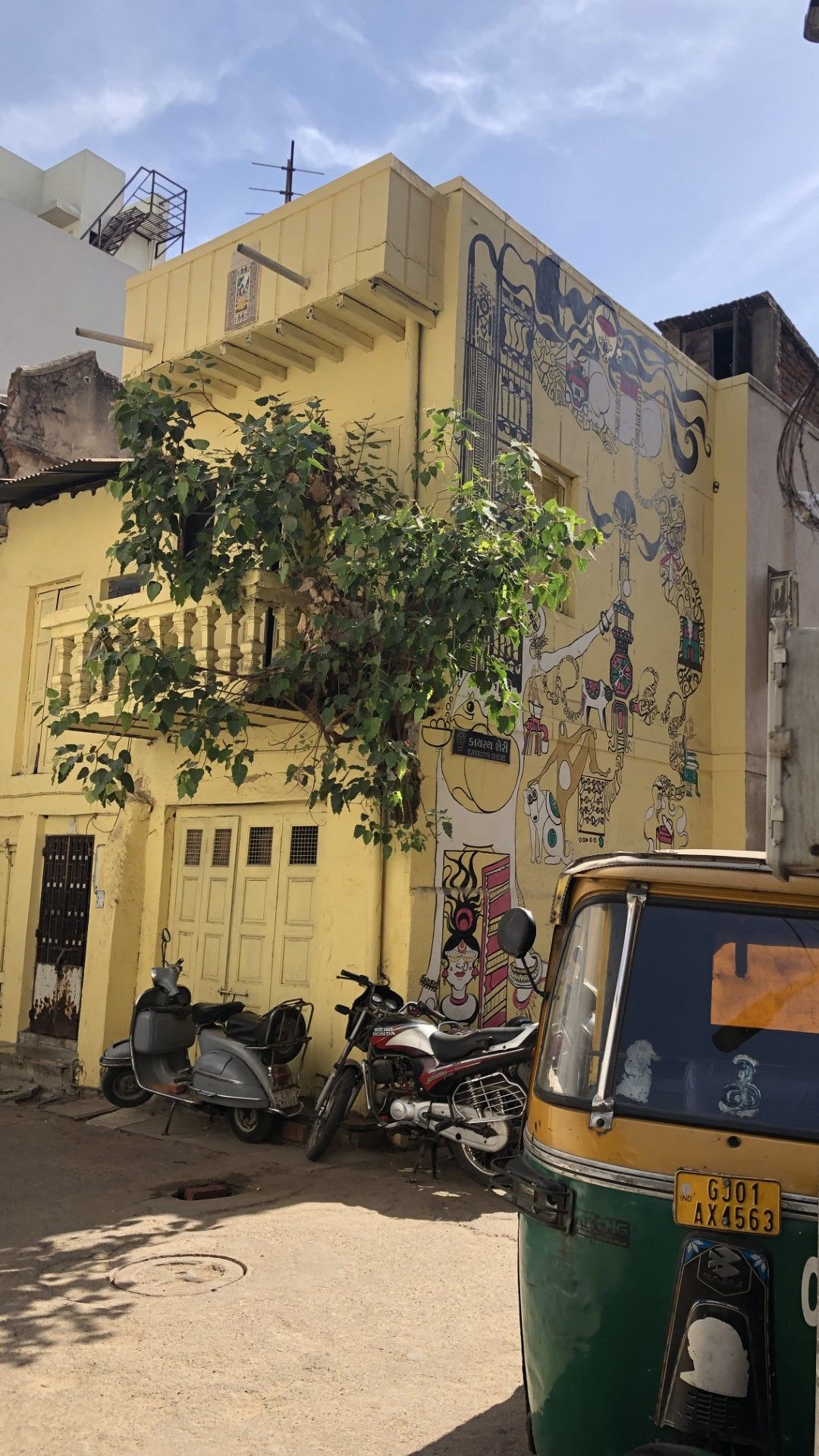
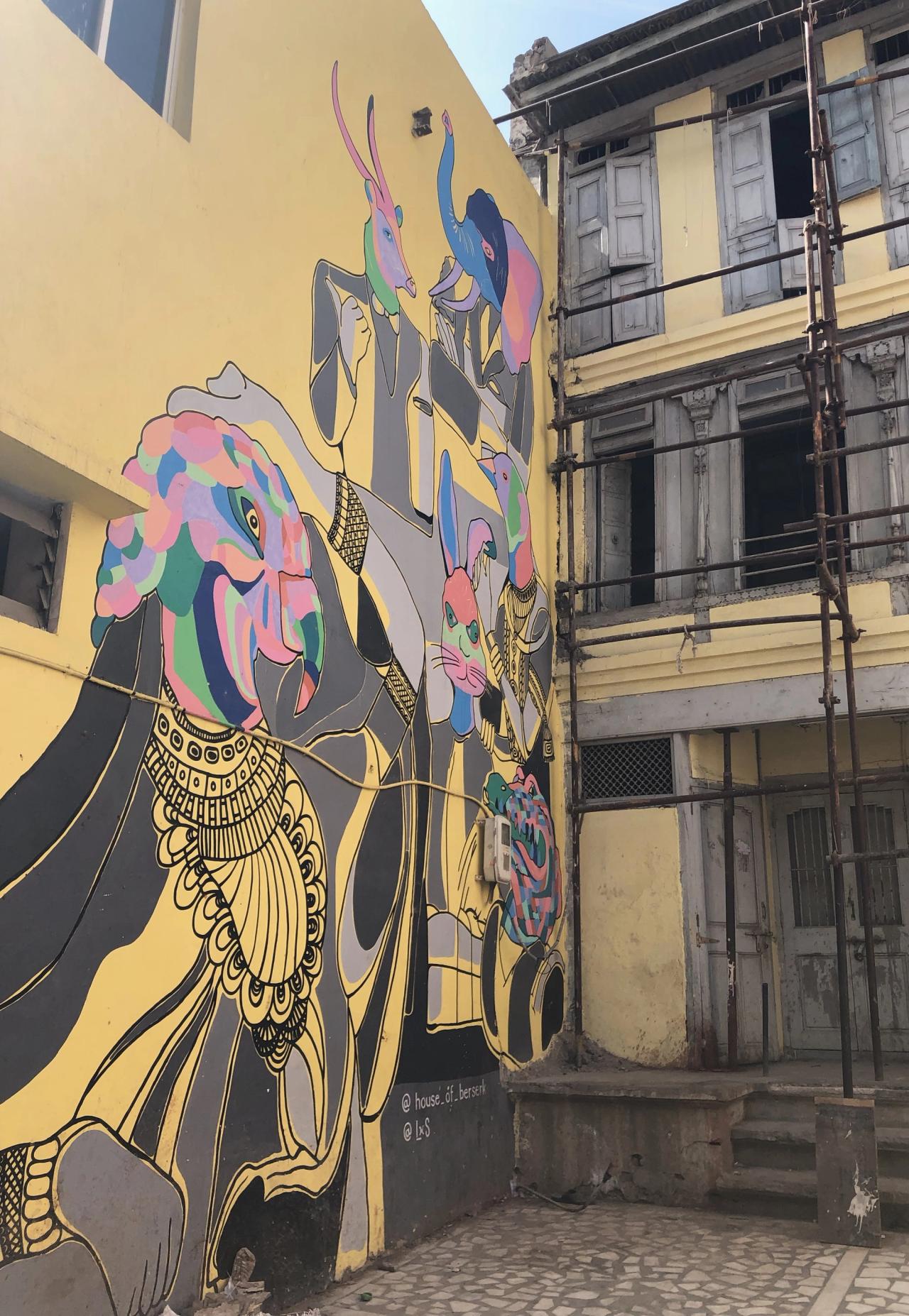
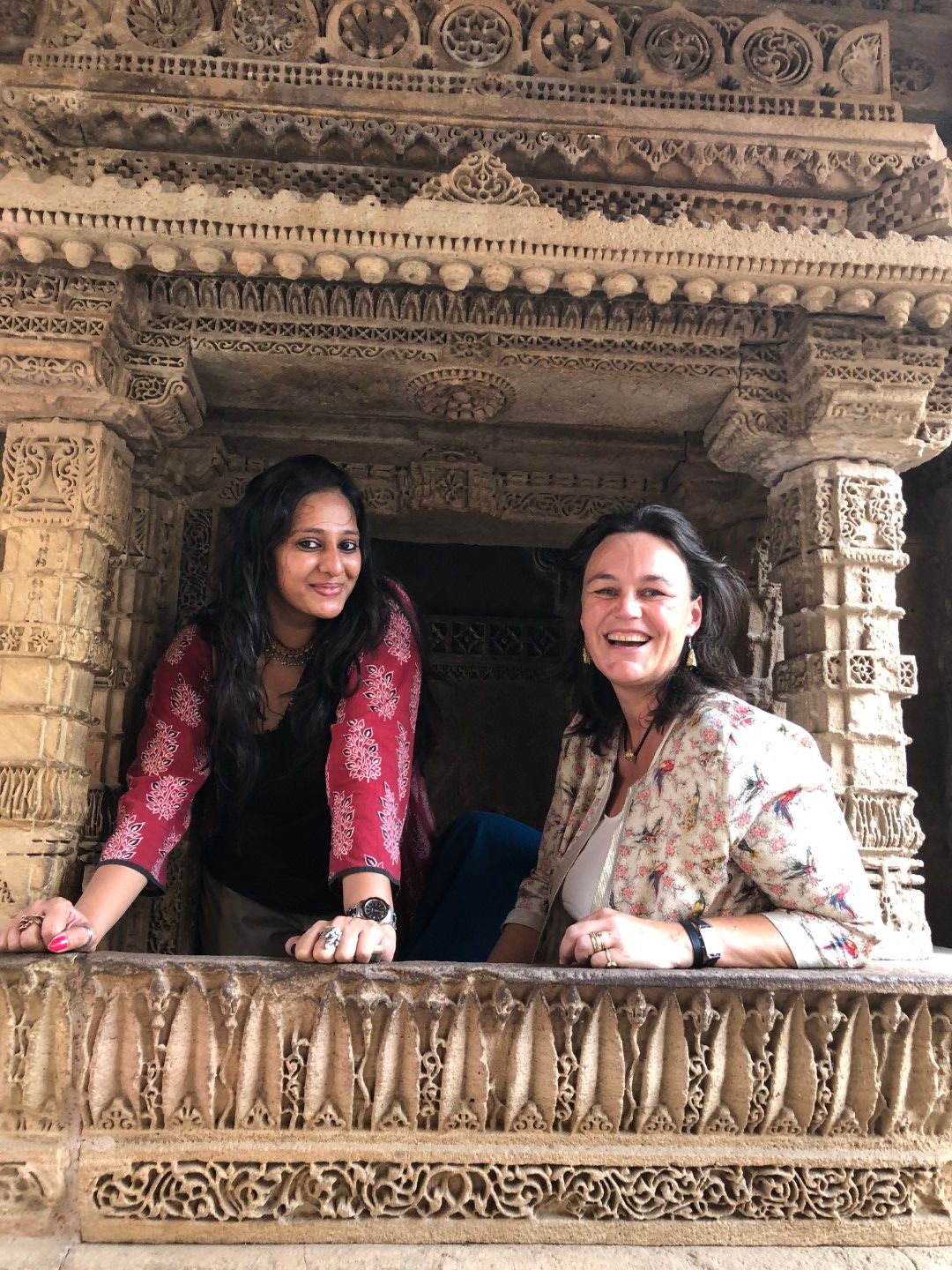
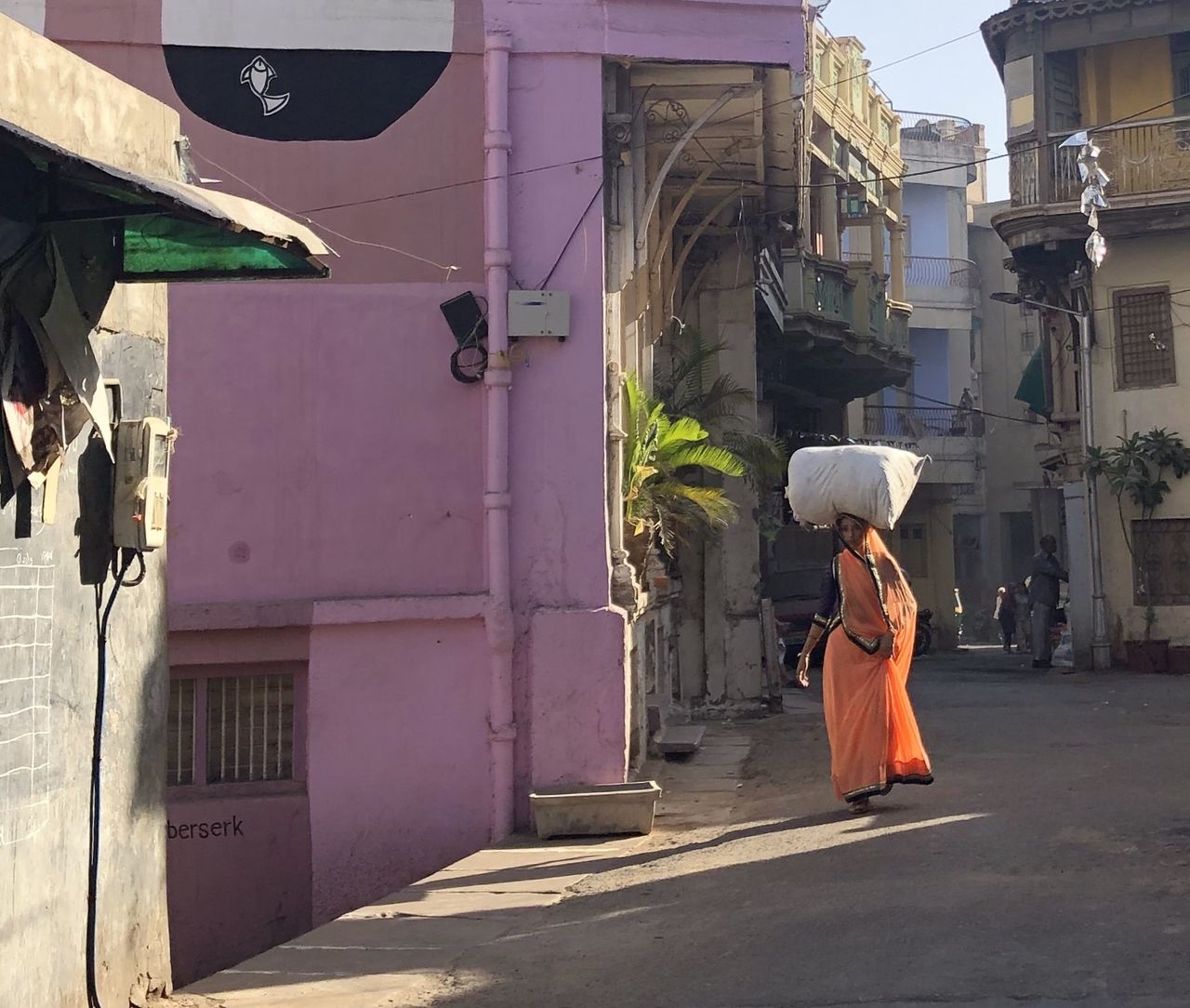
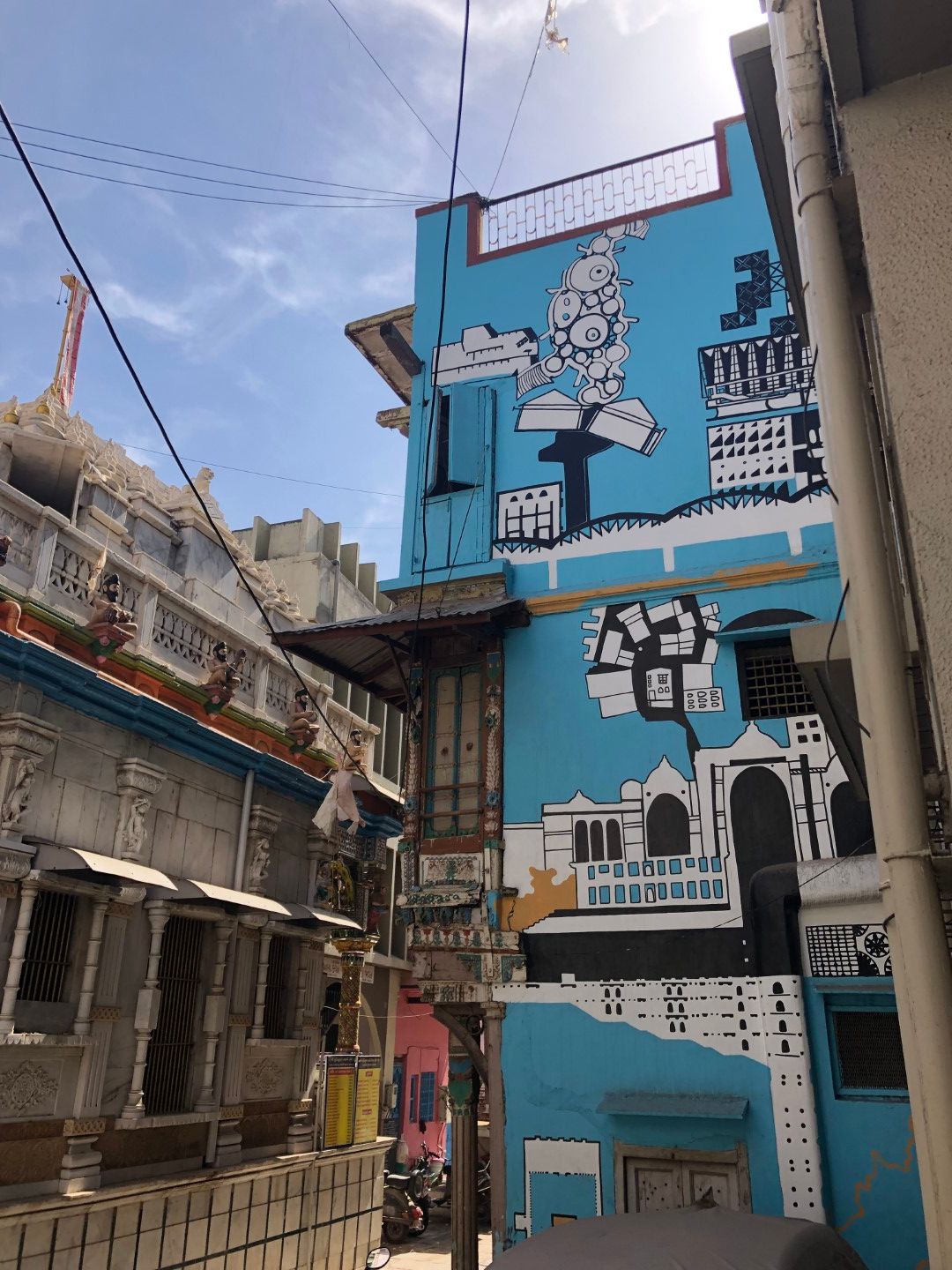

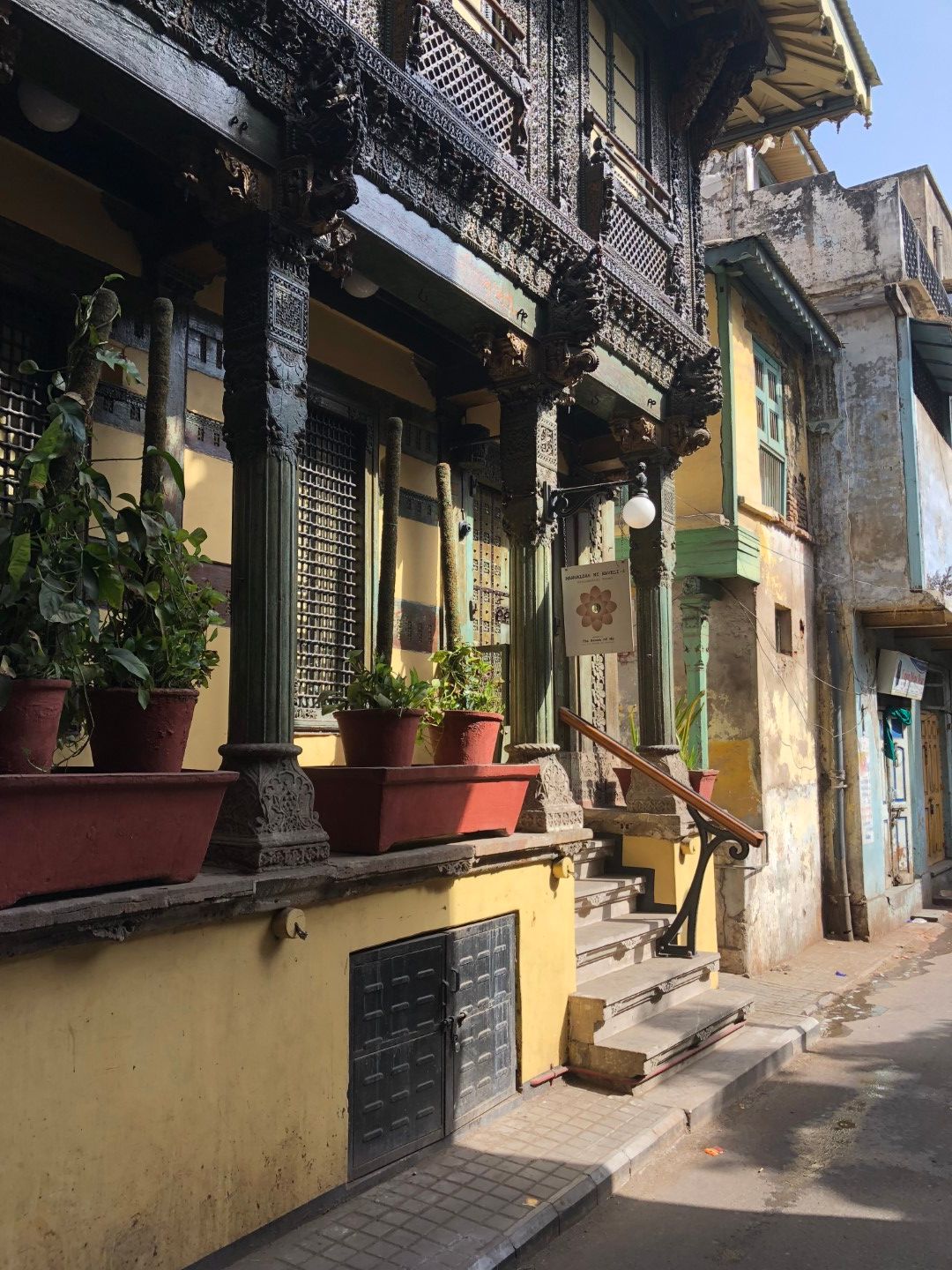
With the city of Ahmedabad becoming a growing tourist destination, the International Center for Innovative Developments (ICID) an Ahmedabad-based NGO, was looking for a window of opportunity to help locals gain agency in the presentation and preservation of their city. Sameeha Sheth, the founder of ICID, is an architect and urban planner with a long track record in management of heritage sites throughout India. When it came to her hometown she wanted to take matters into her own hands and cook up a project that would give a voice to the thousands of people that call the UNESCO-listed city centre home.
Sameeha teamed up with iDiscover and together they secured a grant from the Prince Claus Fund / British Council ‘s ‘Beyond Cultural Heritage’ programme for a community-led cultural mapping project in two historic neighbourhoods. Accepting tourism as an inevitable development, the project began by inviting locals of Ahmedabad to create a personalised guide for inquisitive travellers, highlighting and revealing that which is important to them as locals through 'neighbourhood narratives'. In doing so, the project encouraged residents, business owners and caretakers to present the area's tangible and intangible heritage while deepening their relationships with the city.
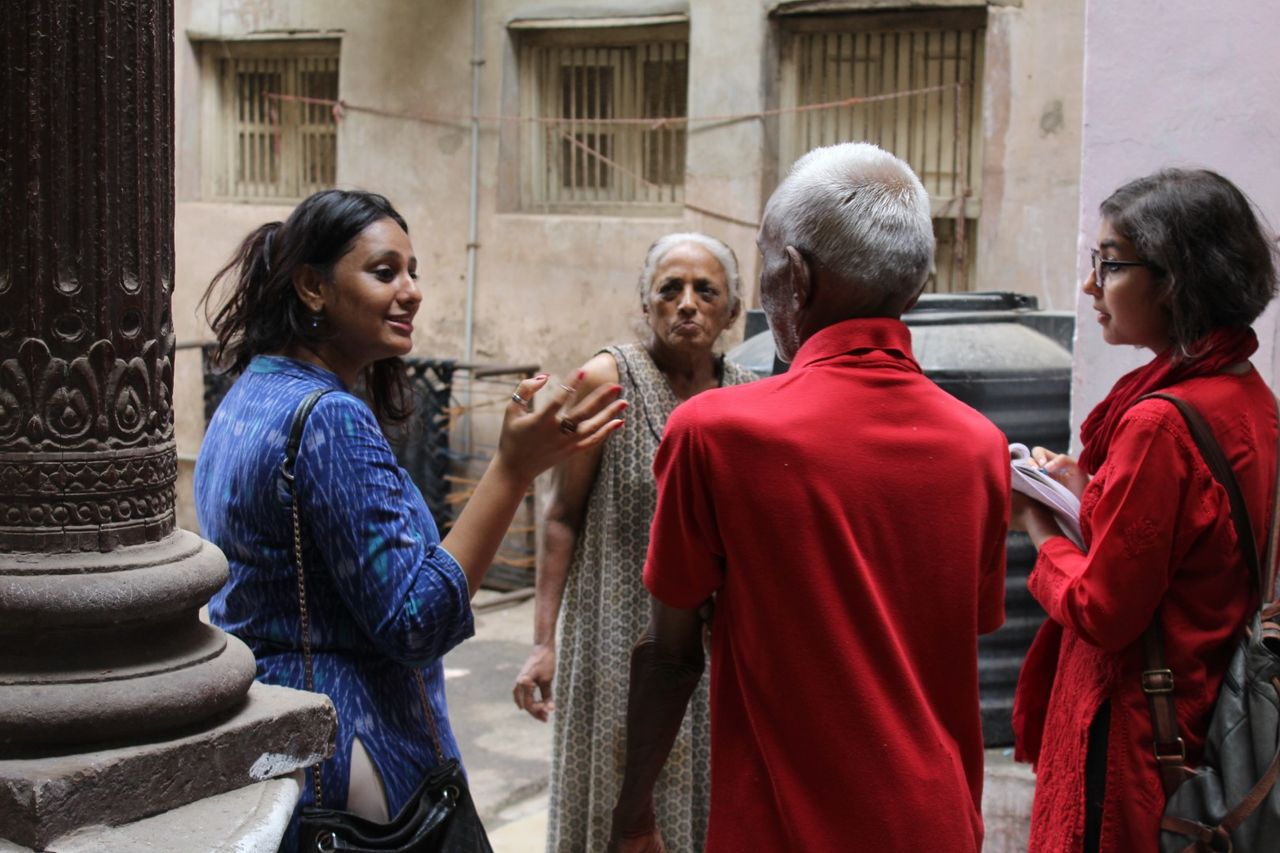
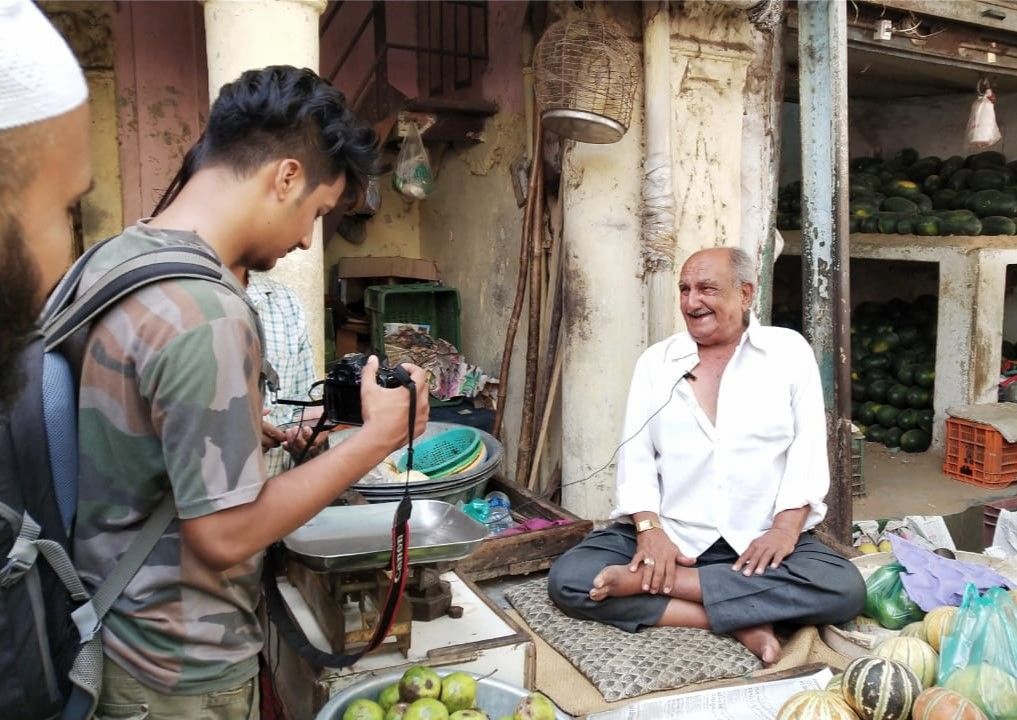
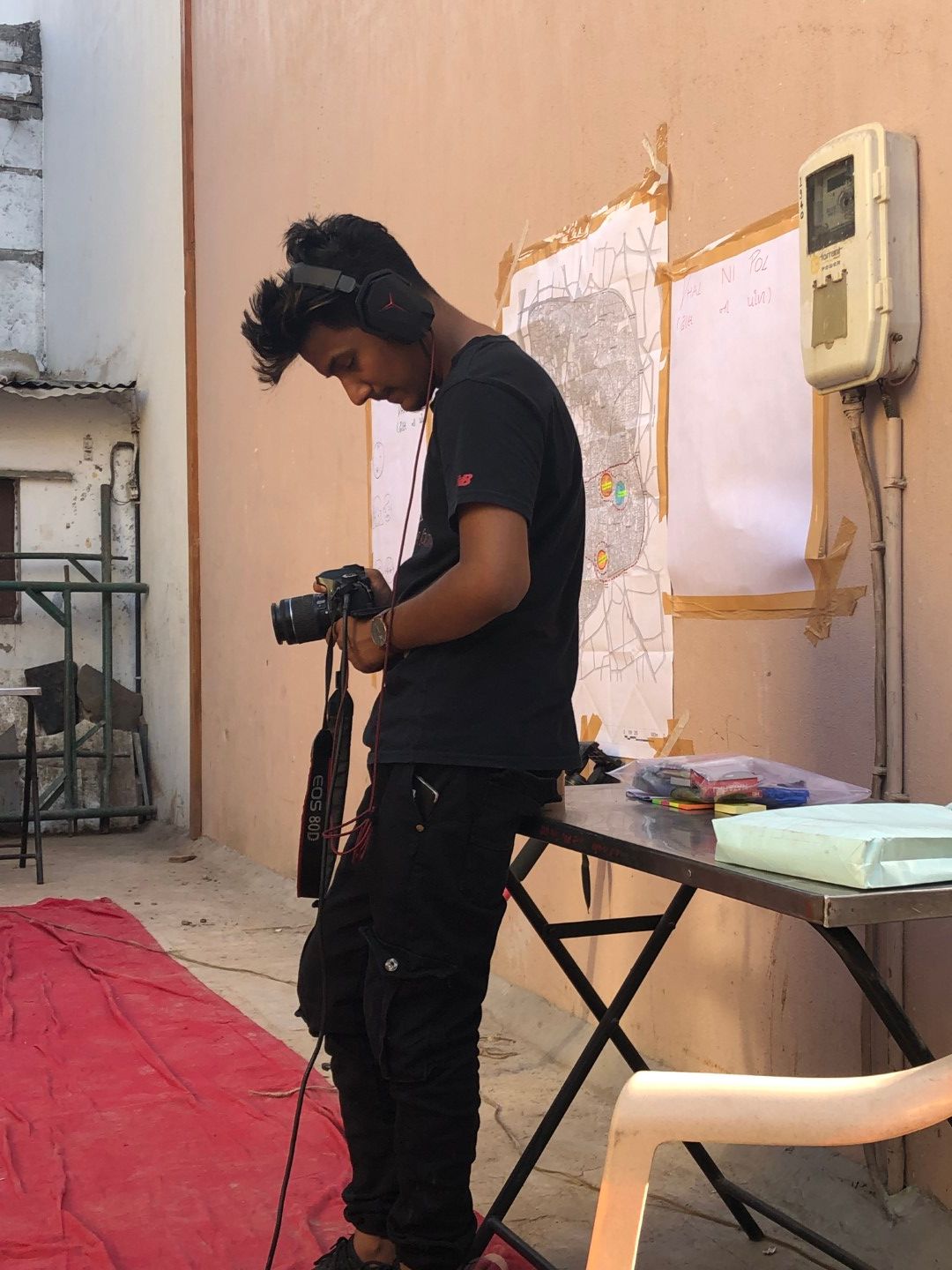
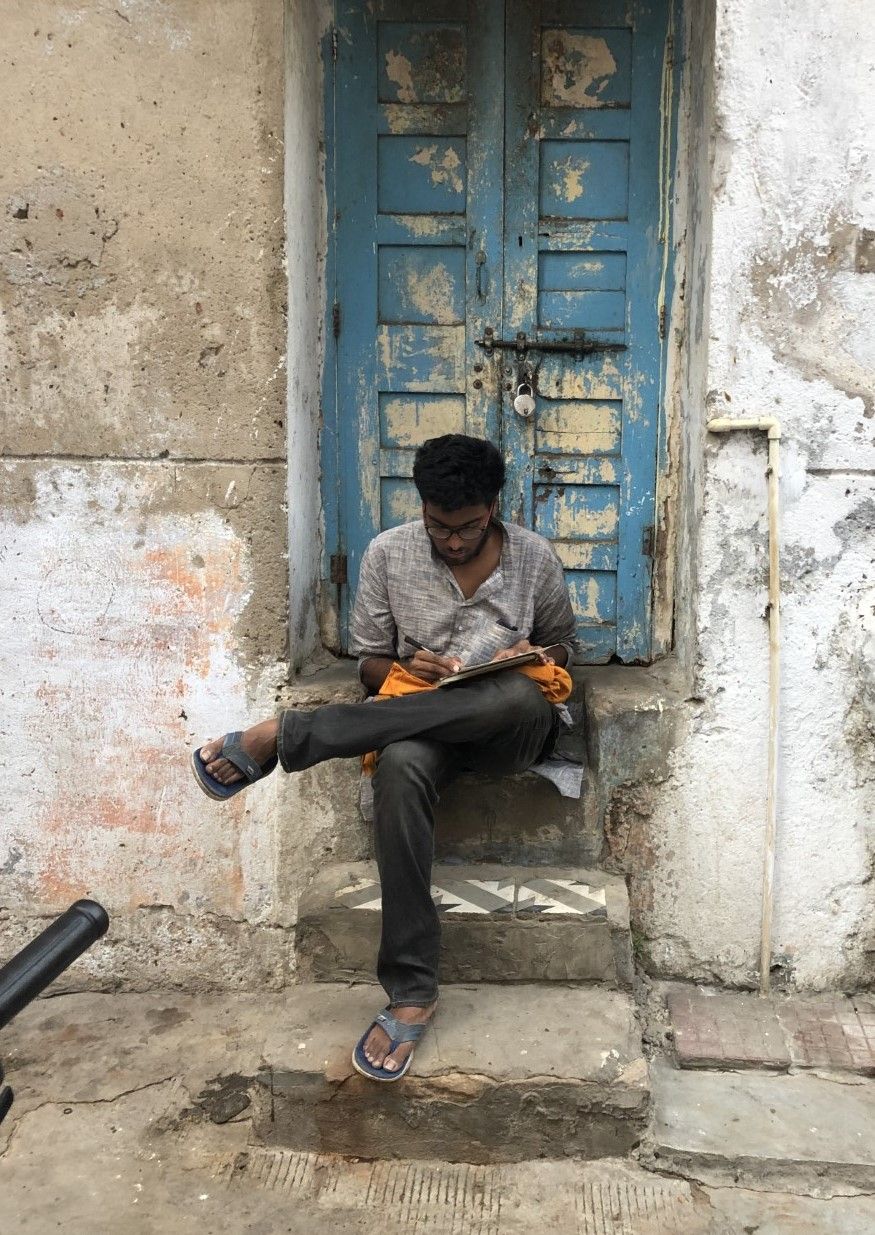
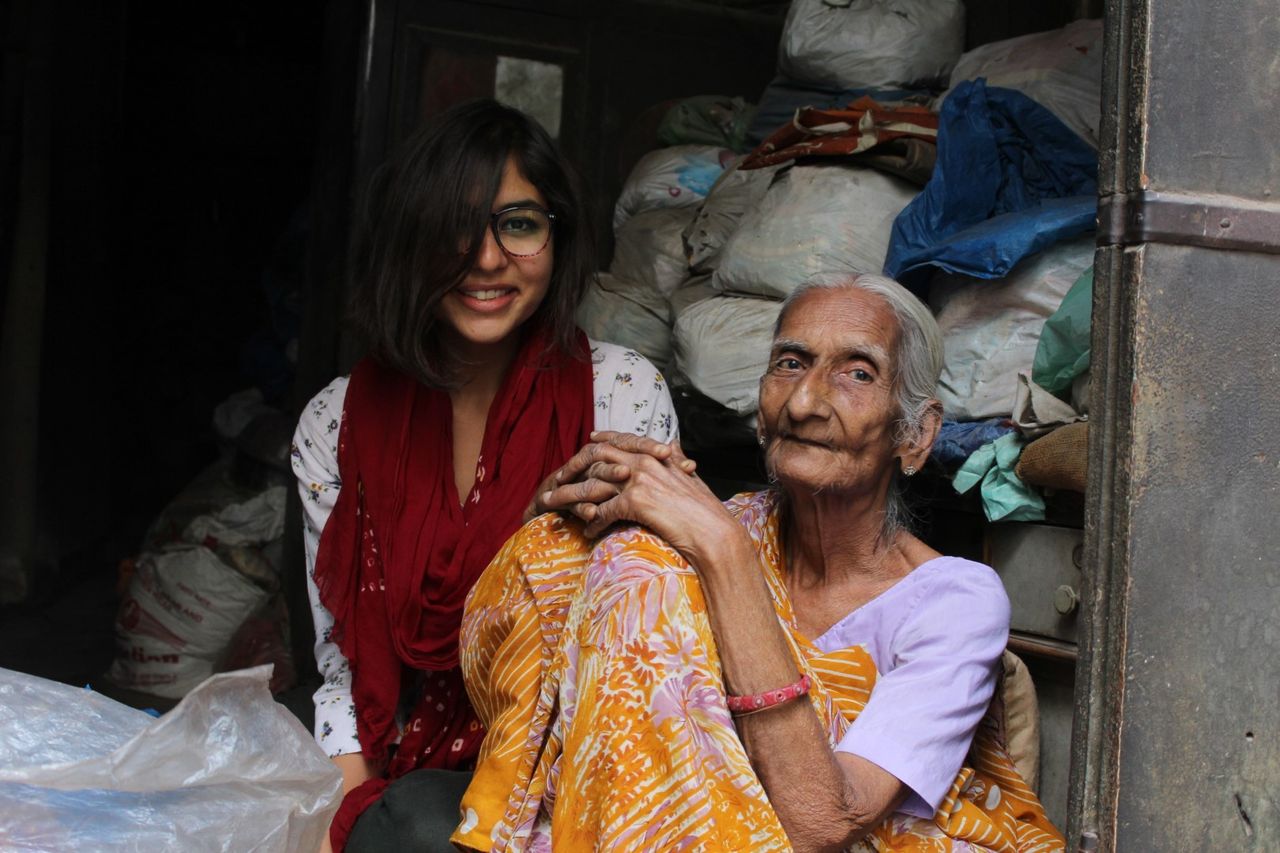
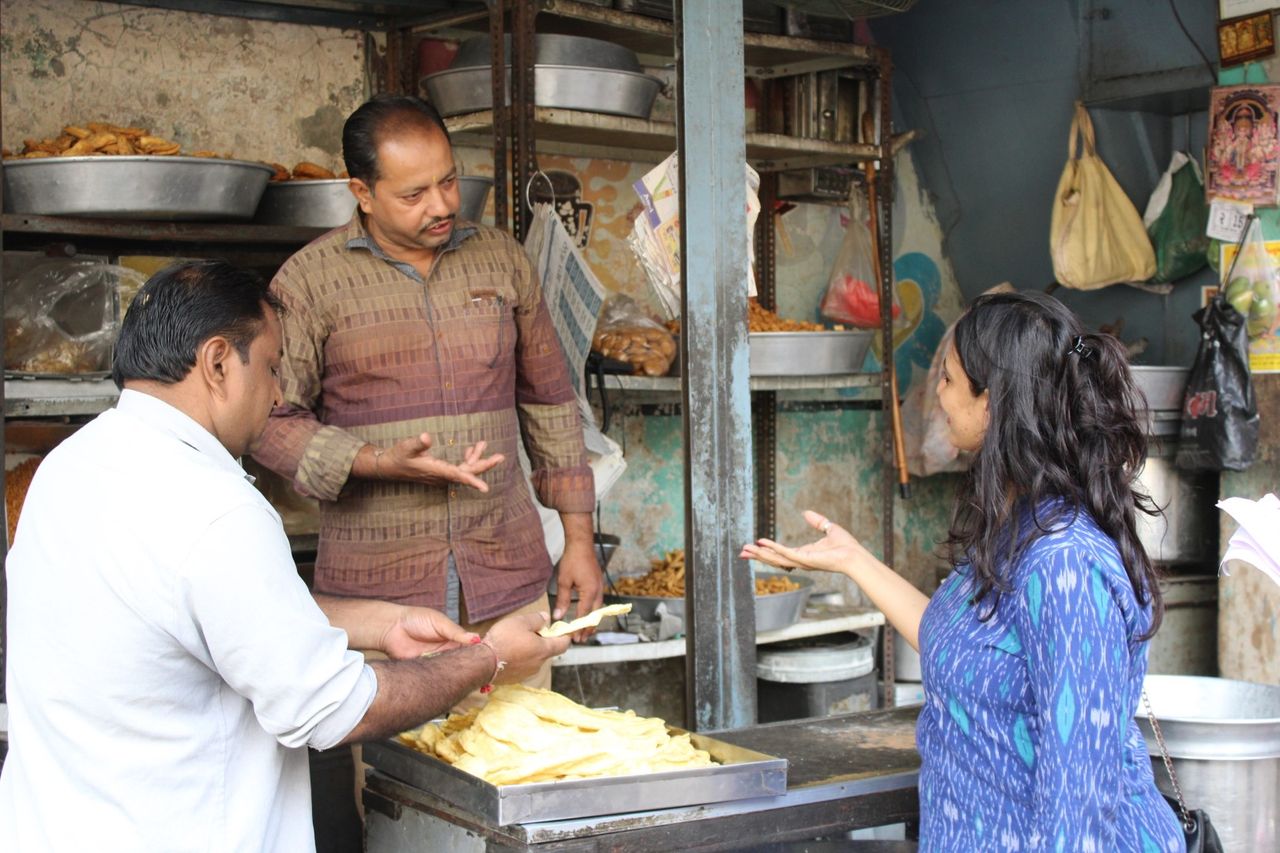

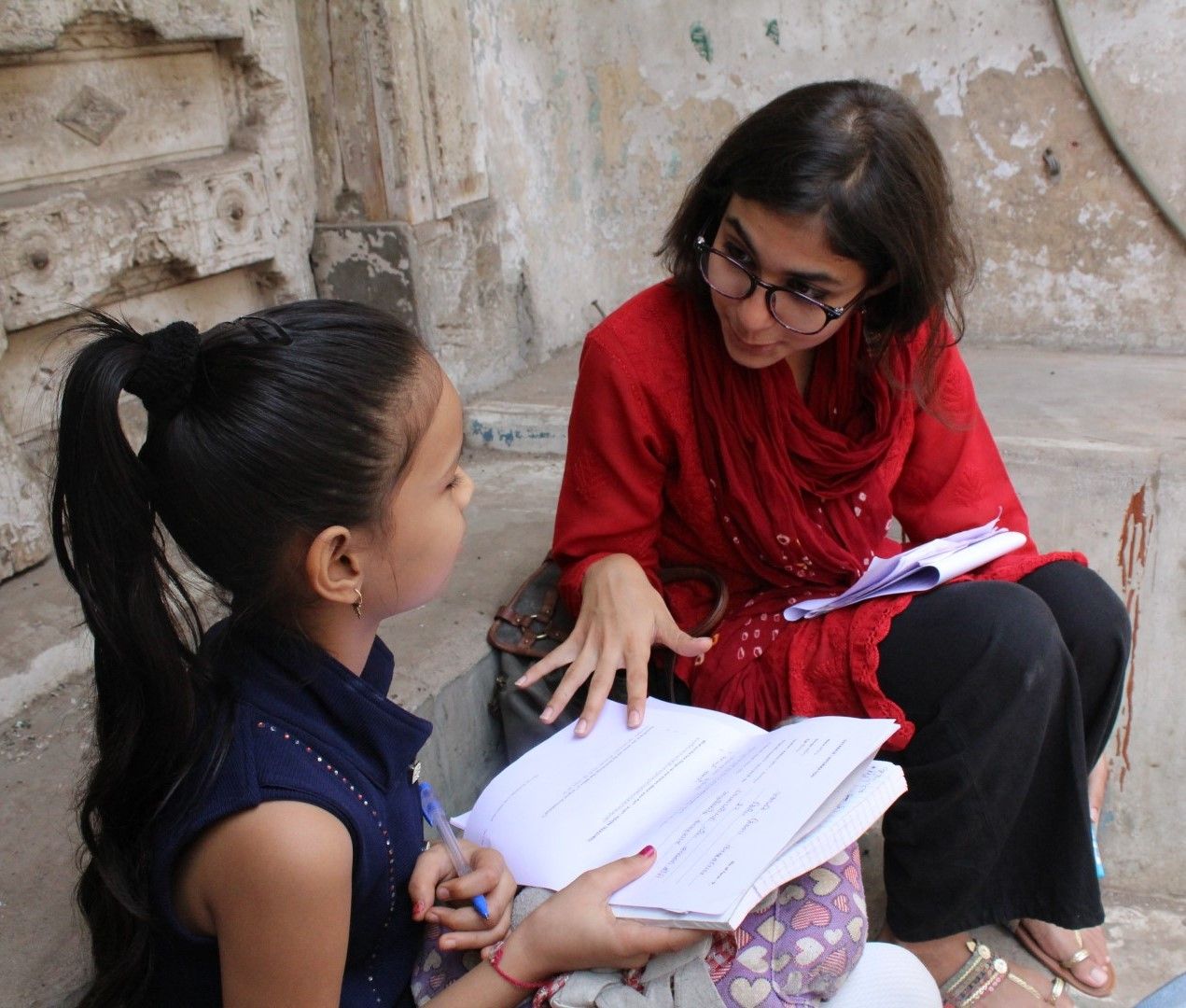
With a strong focus on the inclusion of women's and children’s perspectives, the initial research for the app was conducted through one-on-one interviews with residents and community consultation workshops which gave an opportunity for diverse voices to be heard and enabled a variety of personal stories to be included as integral to the neighbourhoods’ identities.
Sameeha recalls how residents spoke freely and shared their views openly about things that are forgotten, deteriorating and but also shared things that are close to their hearts and things, instances and buildings that they feel proud of and are deeply associated with. Children shared places that are important to them. Markets, eateries and places that they visit; places where they play and places that they would like to show to people that come to Ahmedabad from other parts of the world. Women shared stories of community, how living in the old city is not only comfortable but has a sense of safety and belonging.
Residents spoke freely and shared their views openly about things that are forgotten, deteriorating and but also shared things that are close to their hearts.
Women also shared how proximity to various markets, temples, schools and institutions make their life easy and filled with purpose. Many residents shared stories of their childhood and how intangibilities, age-old traditions and generations of co-living make the old city of Ahmedabad rich and unique.
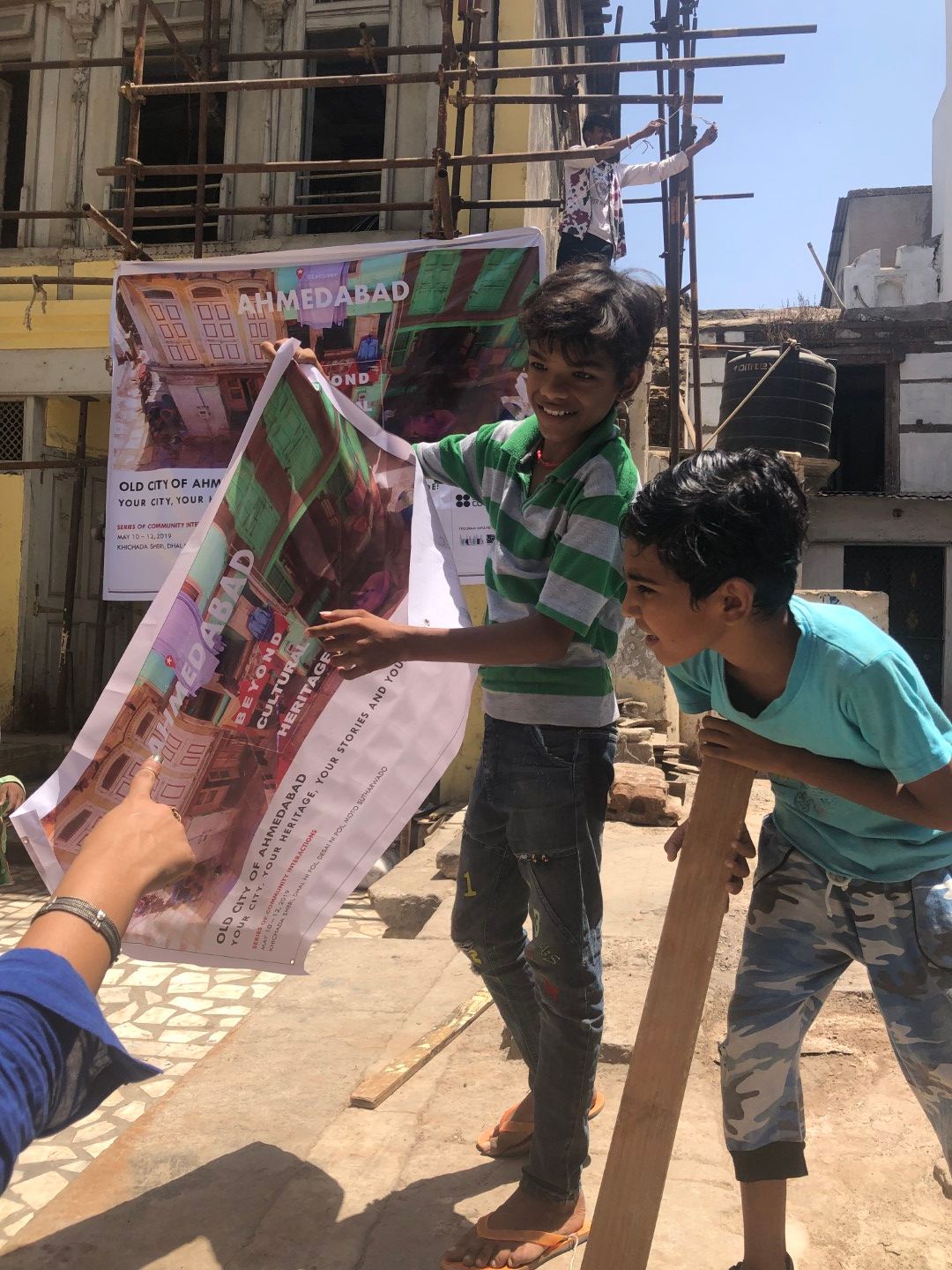

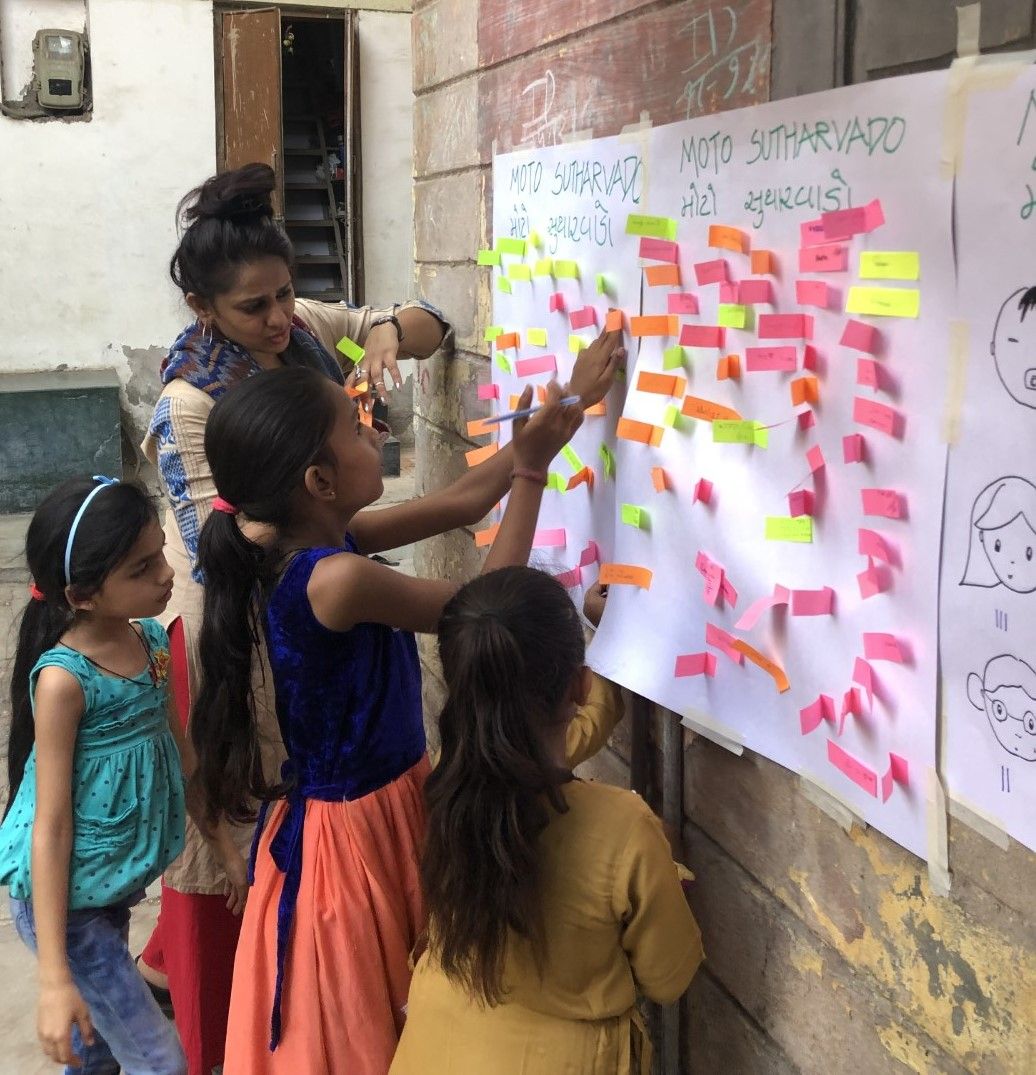

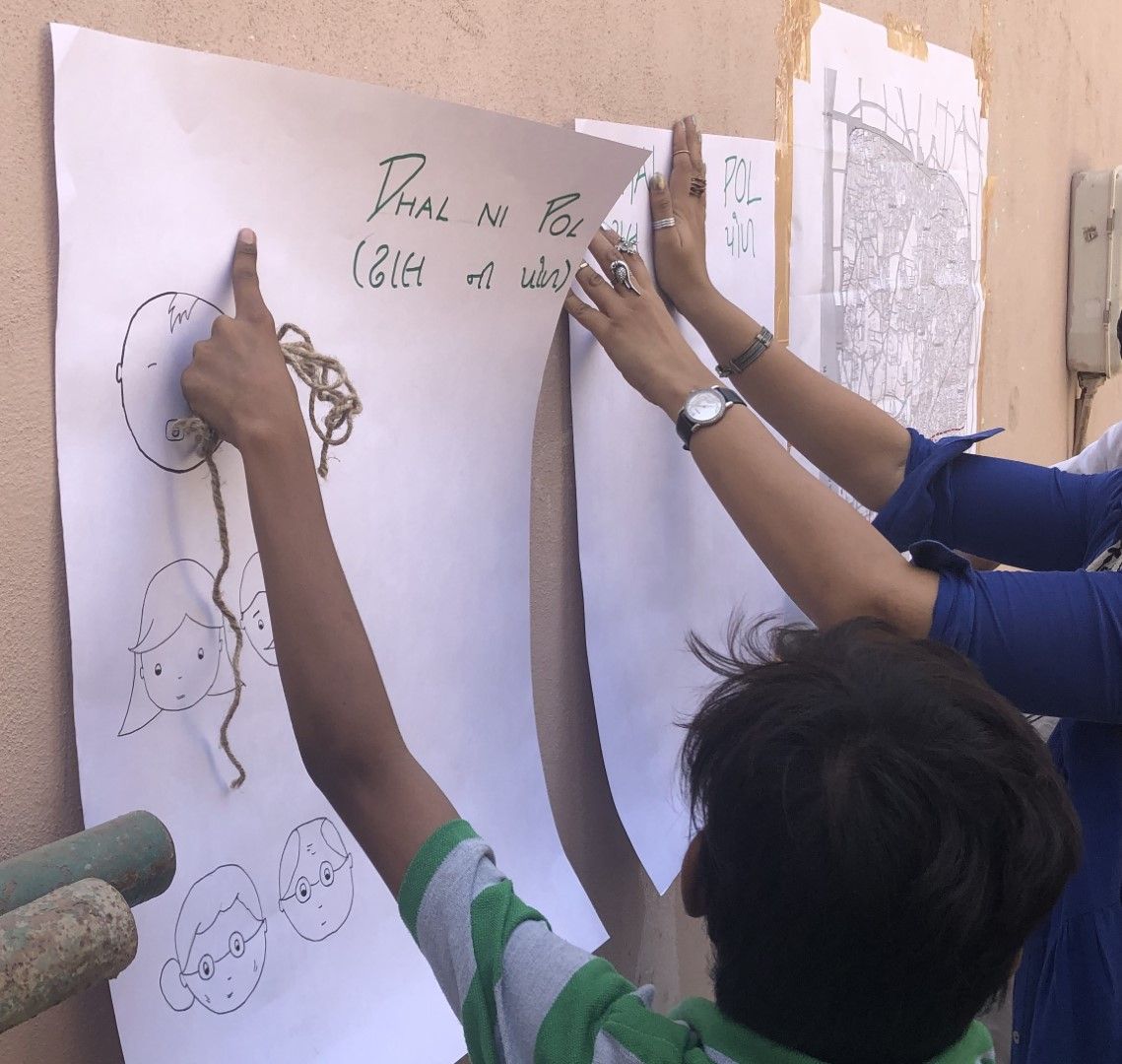
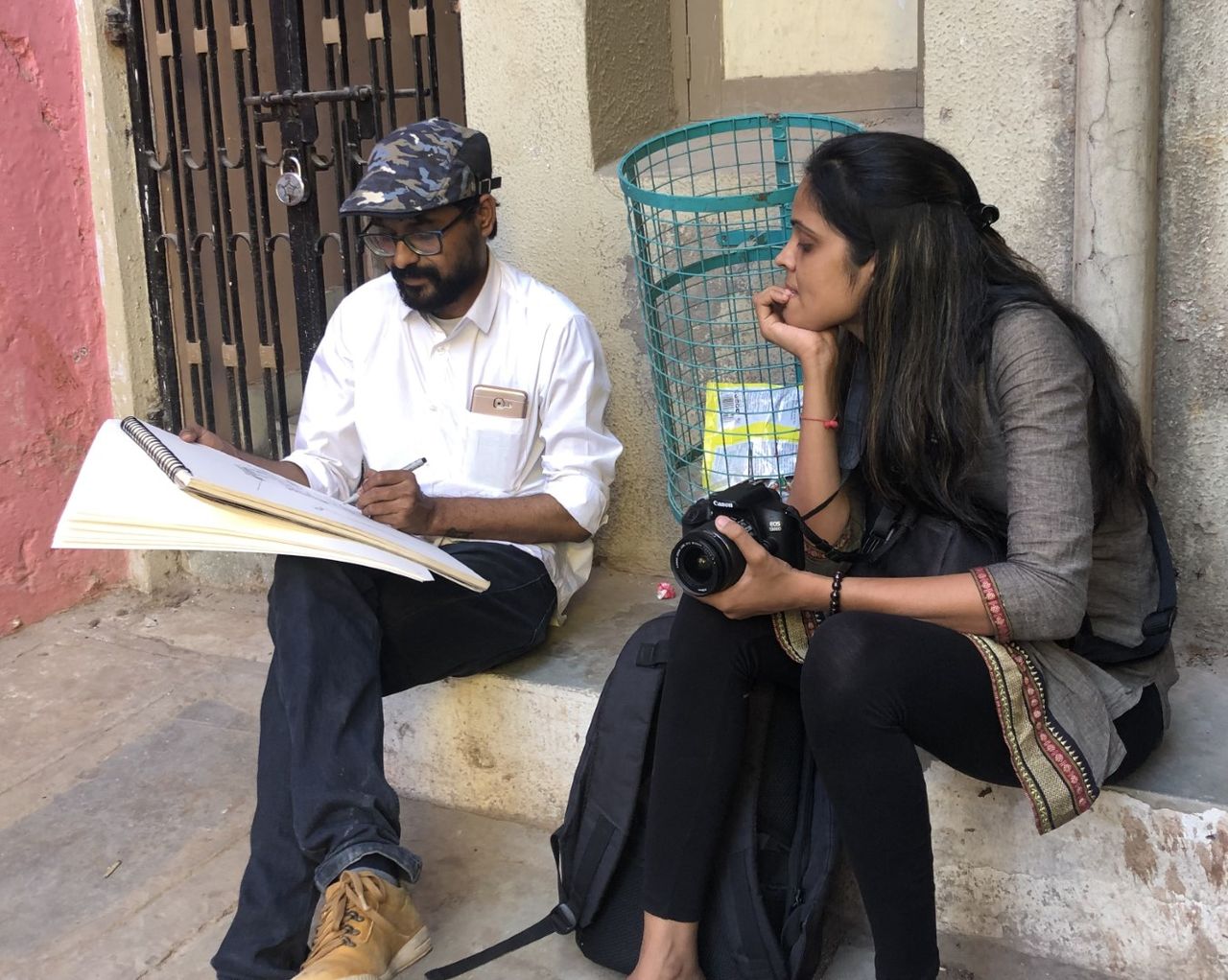
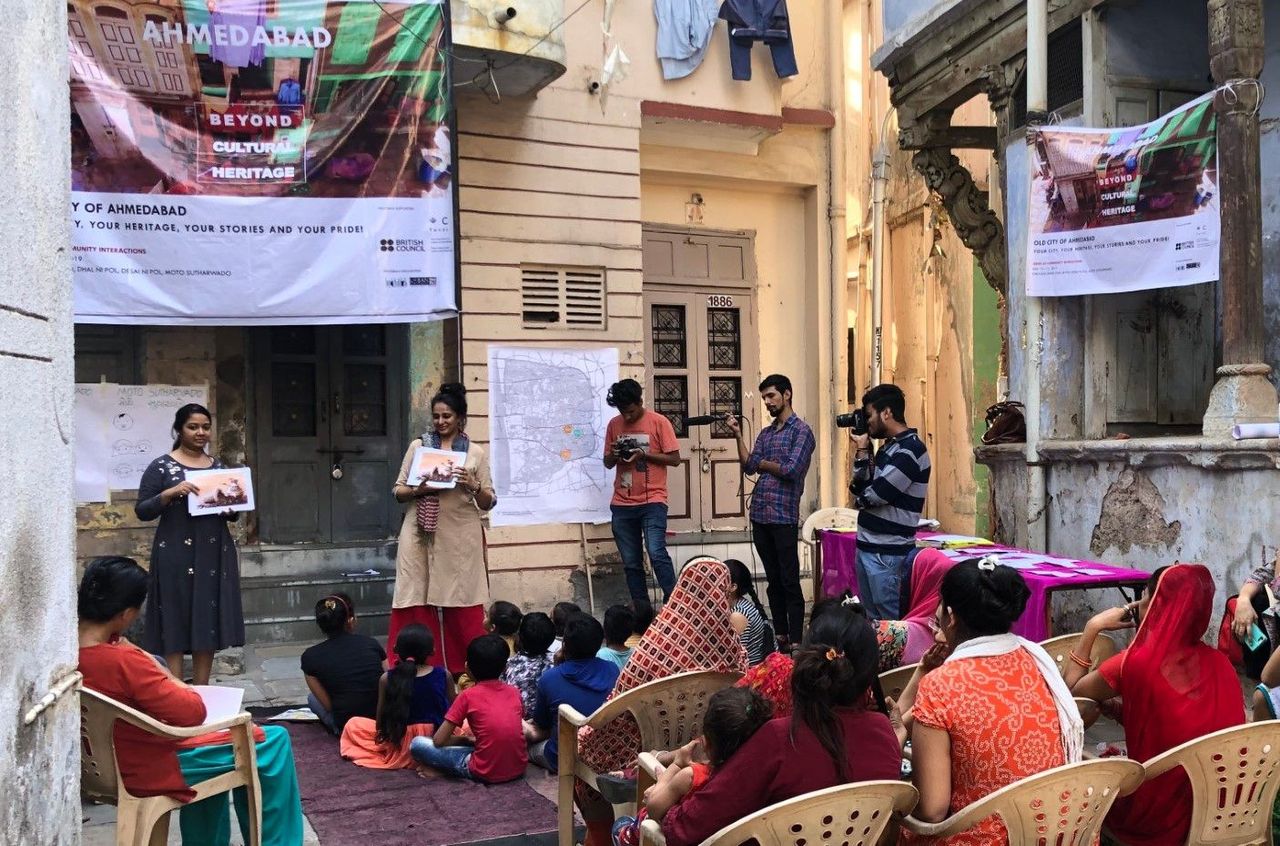
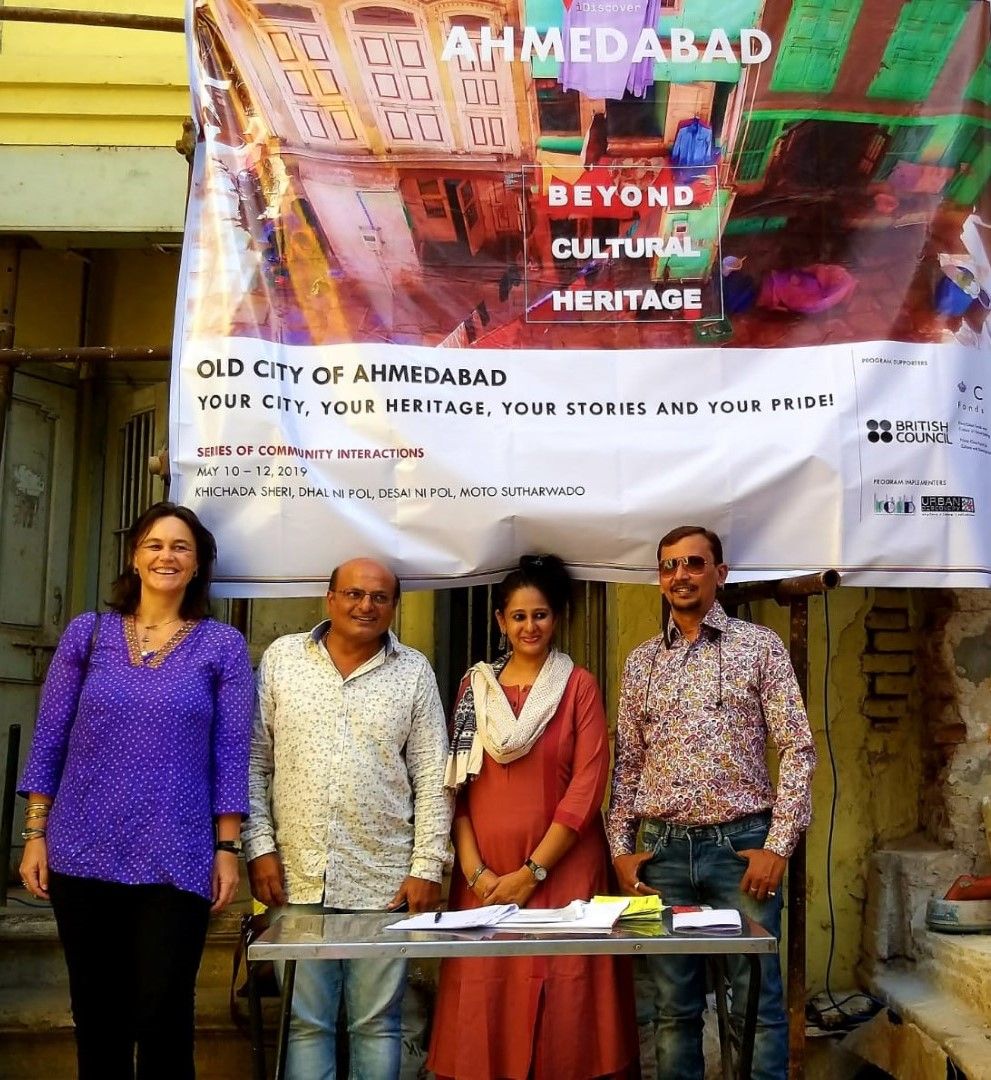
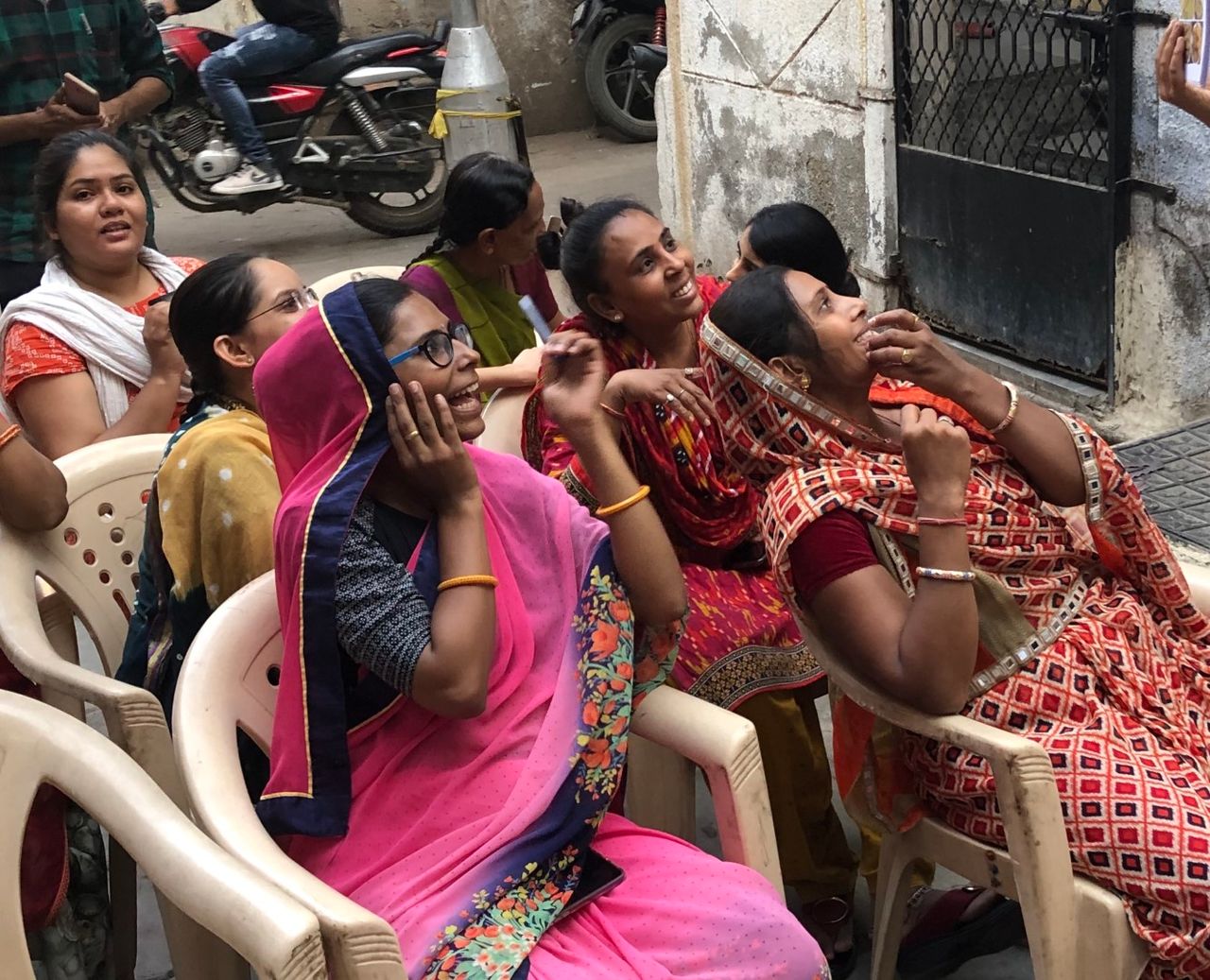
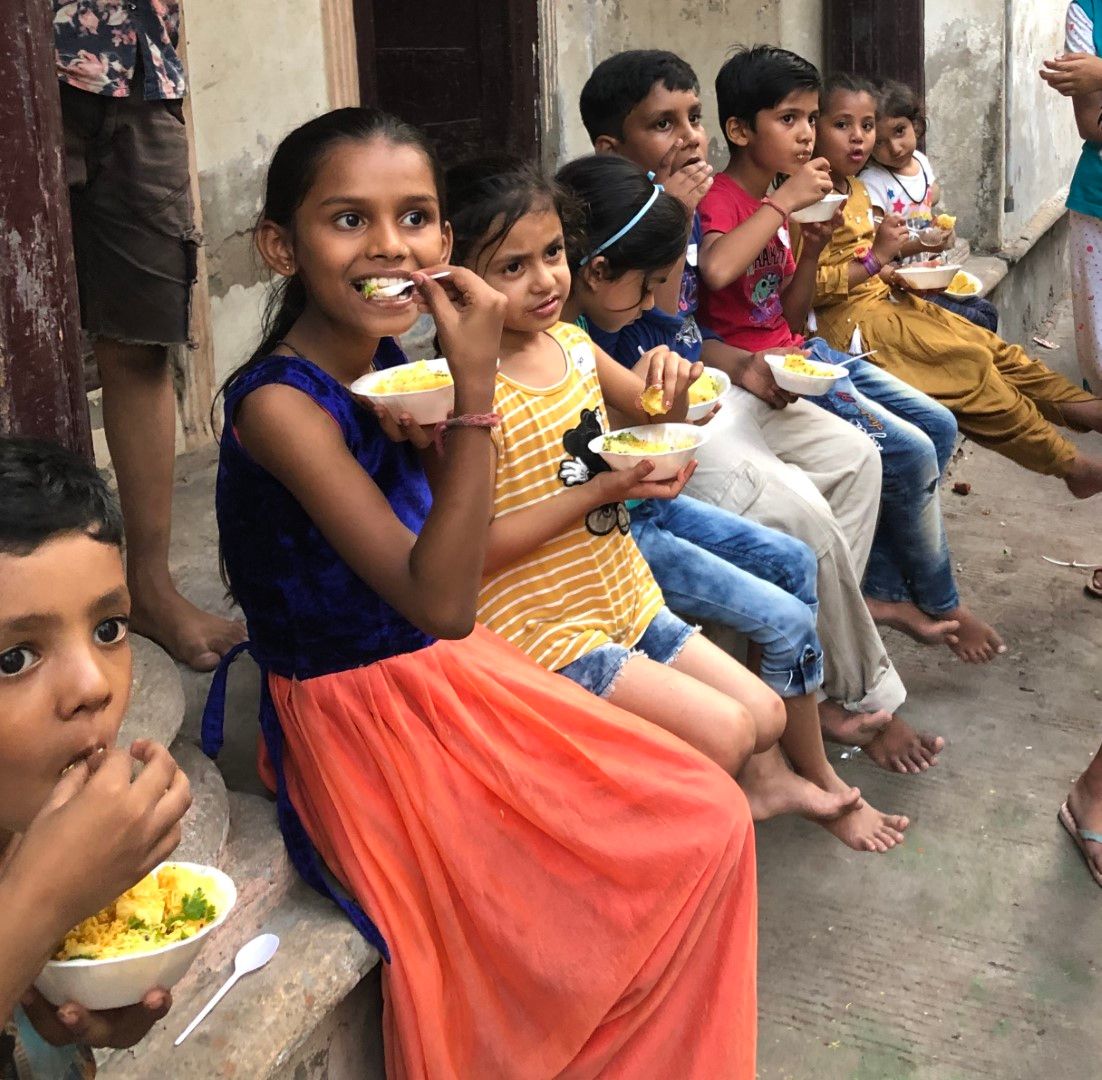
The process of mapping and documenting these stories was a journey of discovery that humbled us with love and support from the people we met on the way.
The team involved local artists, illustrators and photographers to make the journey of discovery a creative and spiritual one. Connecting through words, music and visuals enriched the process and also ensured a great output: a well-informed, routed and culturally sensitive combination of a digital application and exquisitely designed maps for two signature Ahmedabad historic neighbourhoods: Khadia and Bhadra.
The project concluded with two neighbourhood events, making iDiscover Ahmedabad come full circle. Bringing the stories and work back to the people, celebrating and strengthening the local community. An unprecedented occasion that brought officials, investors and the CEO of Ahmedabad World Heritage City Trust into the neighbourhood. Sameeha was proud to have Padma Bhushan, Ela Bhatt, the Indian cooperative organizer, activist, proponent of Mahatma Gandhi’s philosophy and recipient of the 2nd highest national honour inaugurate the pop-up exhibition.
This way, the project was used to catalyse positive, inclusive dialogues within the community, helping to create a personalised local narrative that, rather than denying tourism, and presenting Ahmedabad as a living city with a nuanced cultural narrative. The discussion revolved around alternative and effective methods of heritage conservation, tools to increase heritage tourism and most importantly, to involve people and residents in the process.

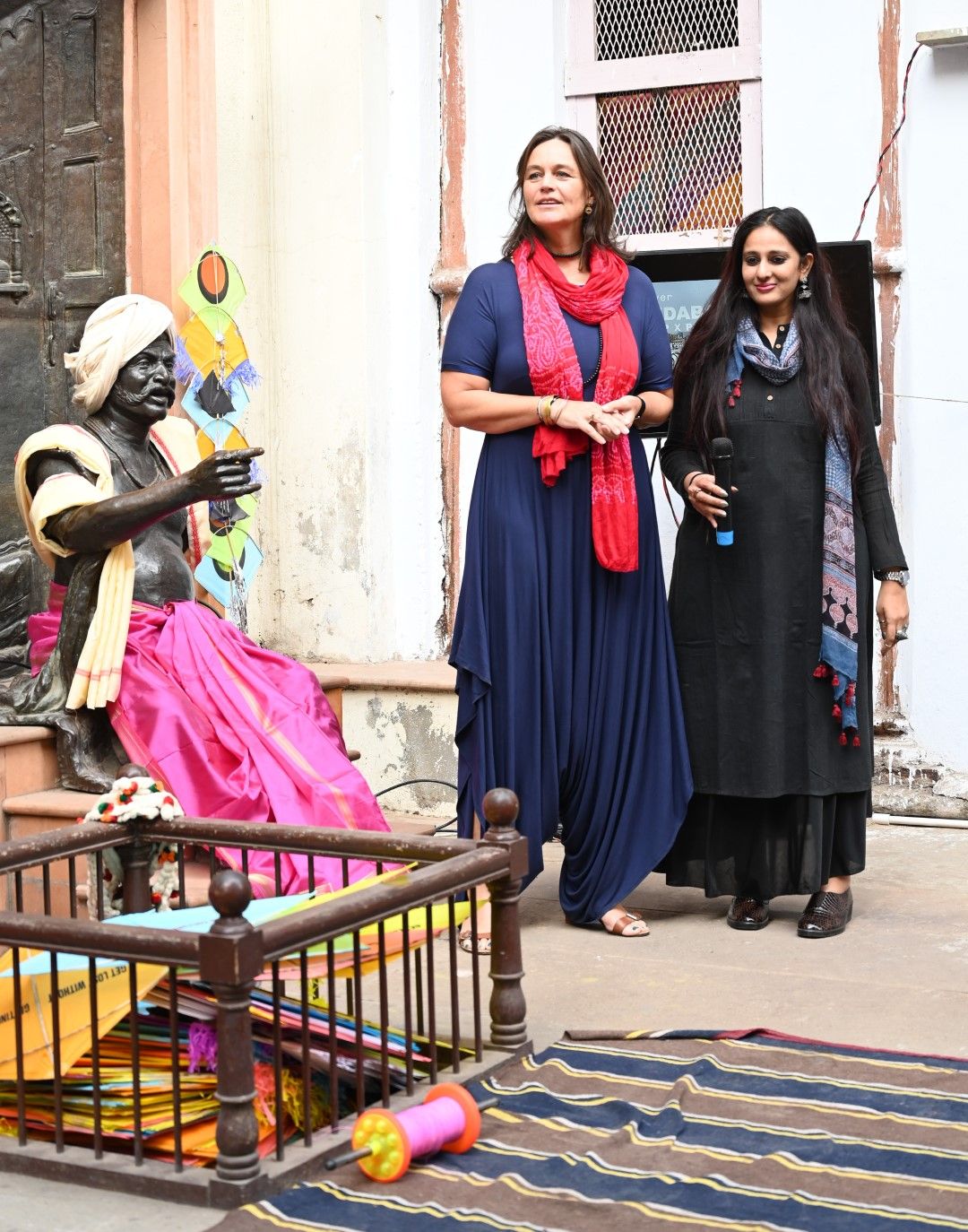
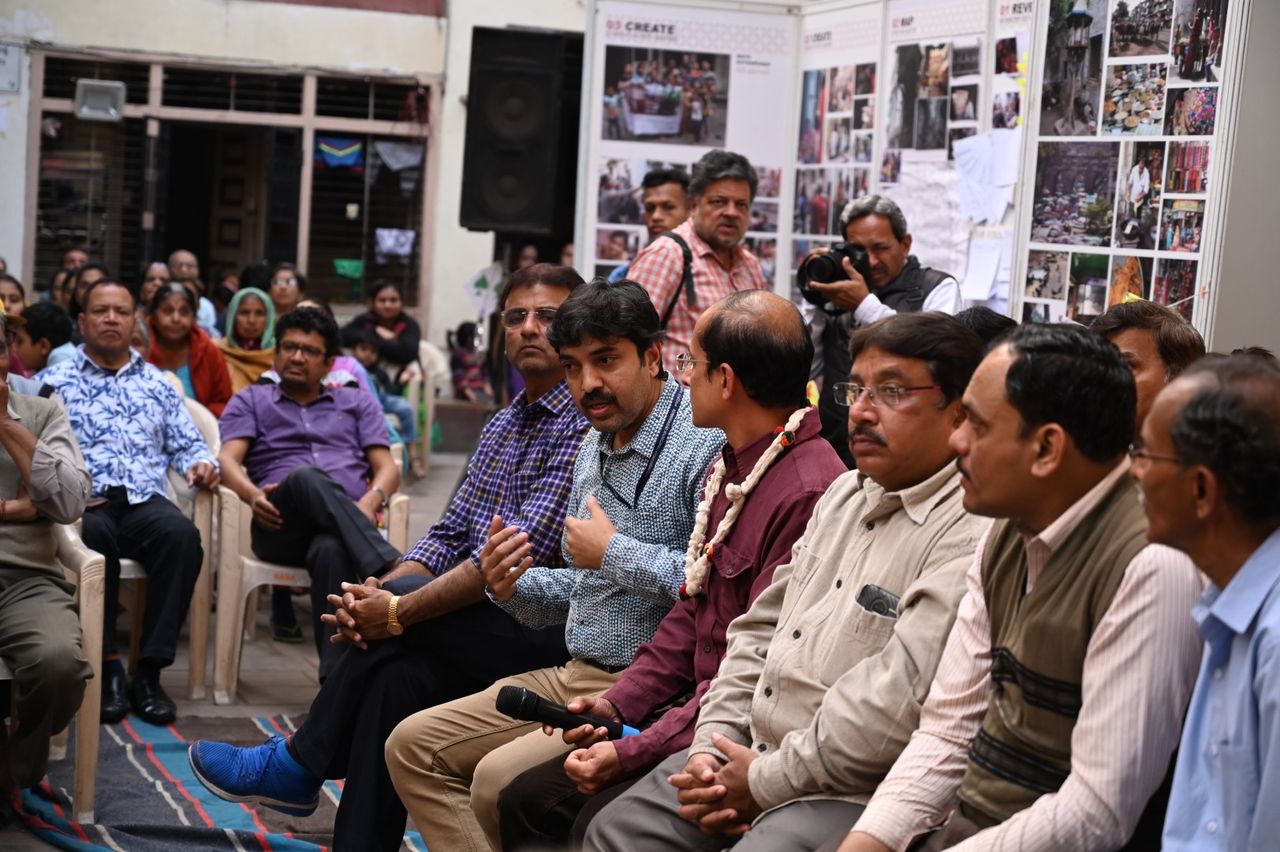
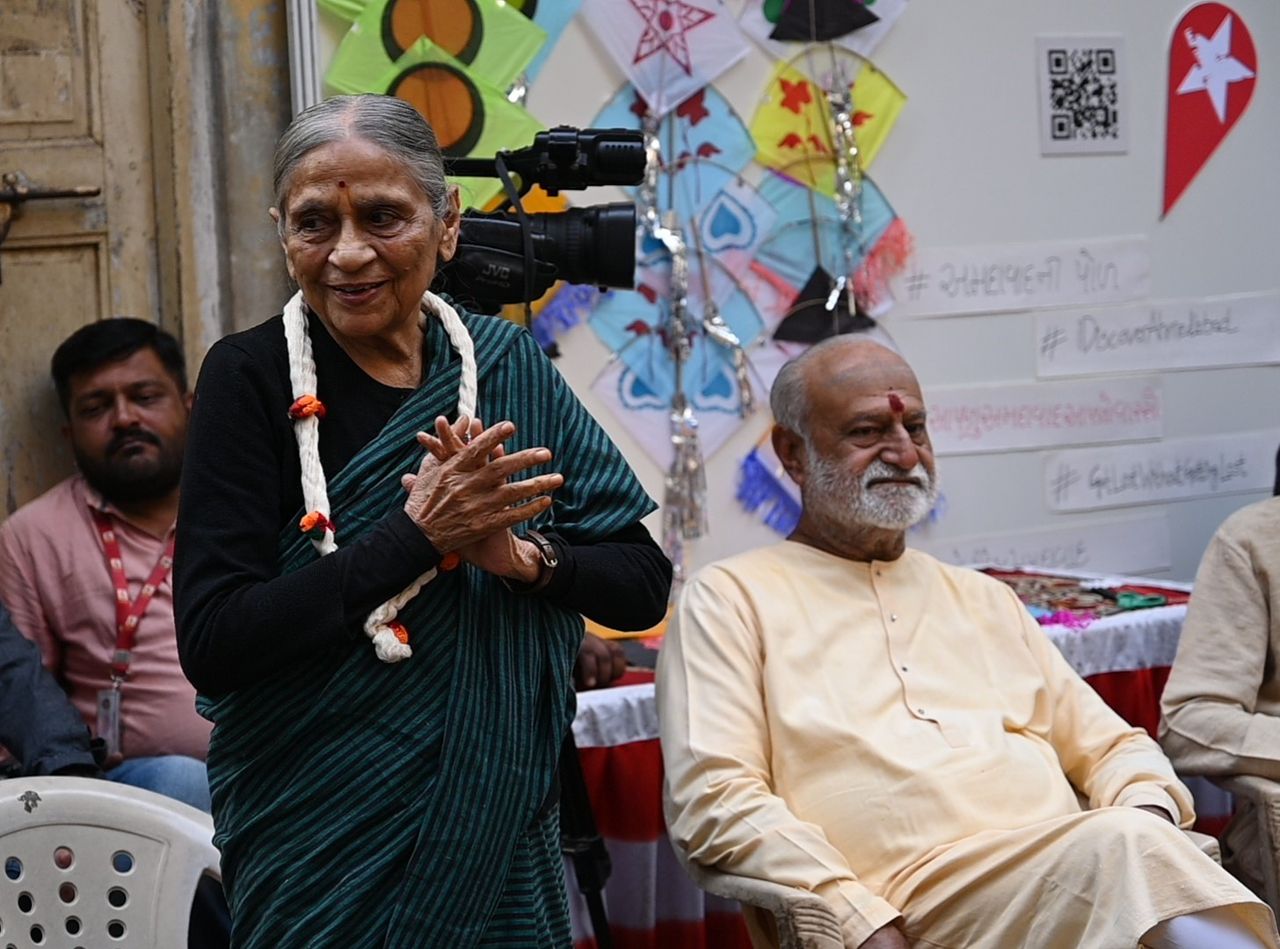

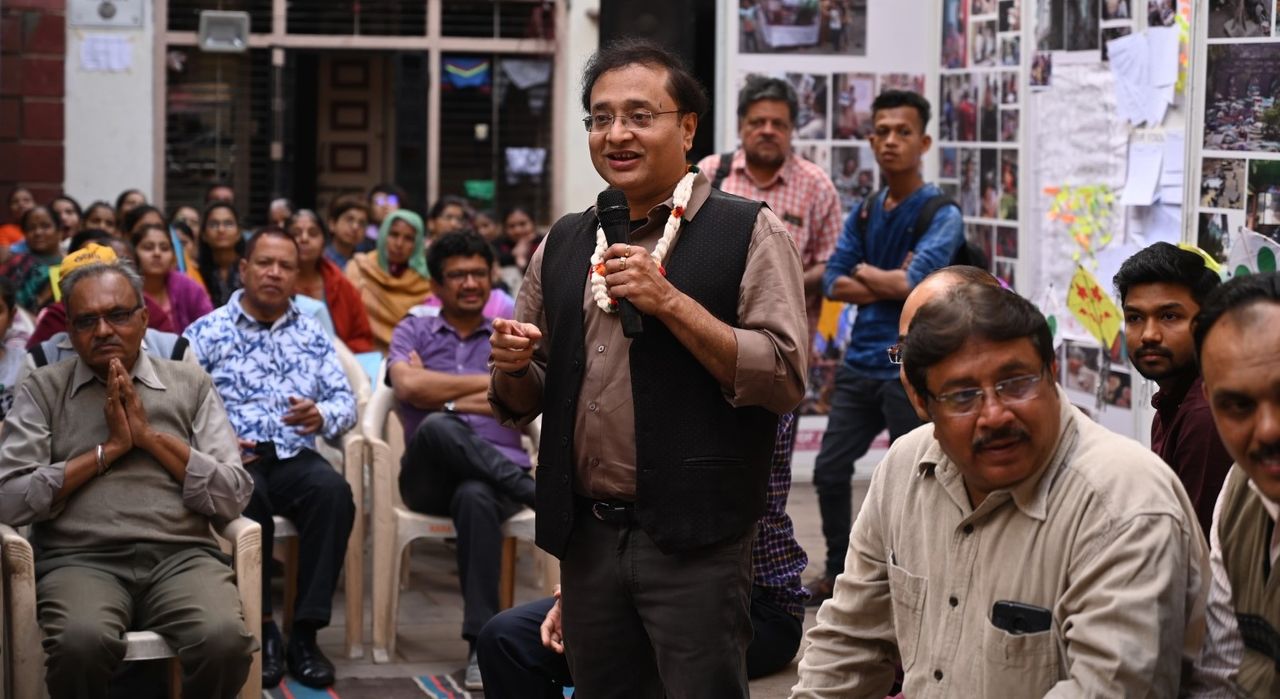
The iDiscover approach overcomes the disconnection that often occurs between residents and managers of World Heritage Sites.
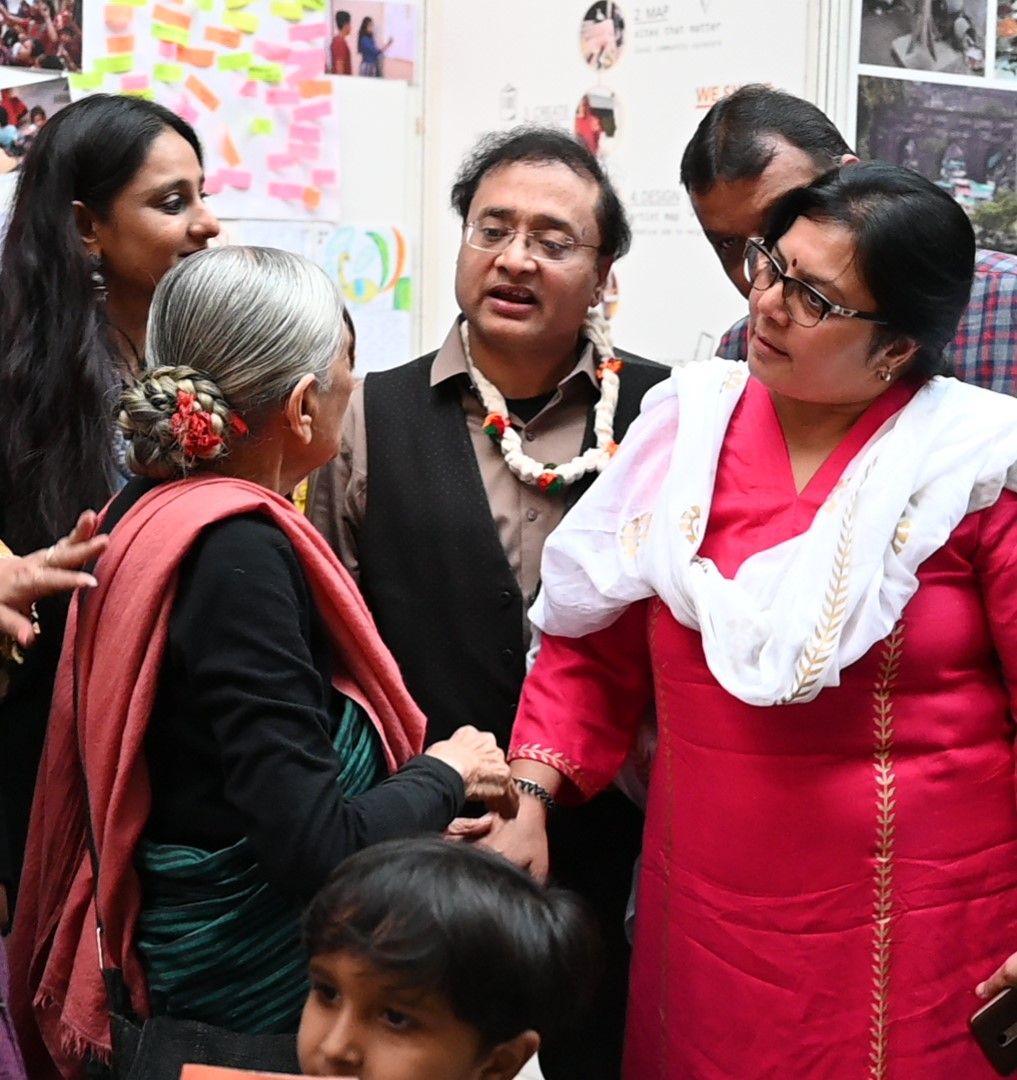
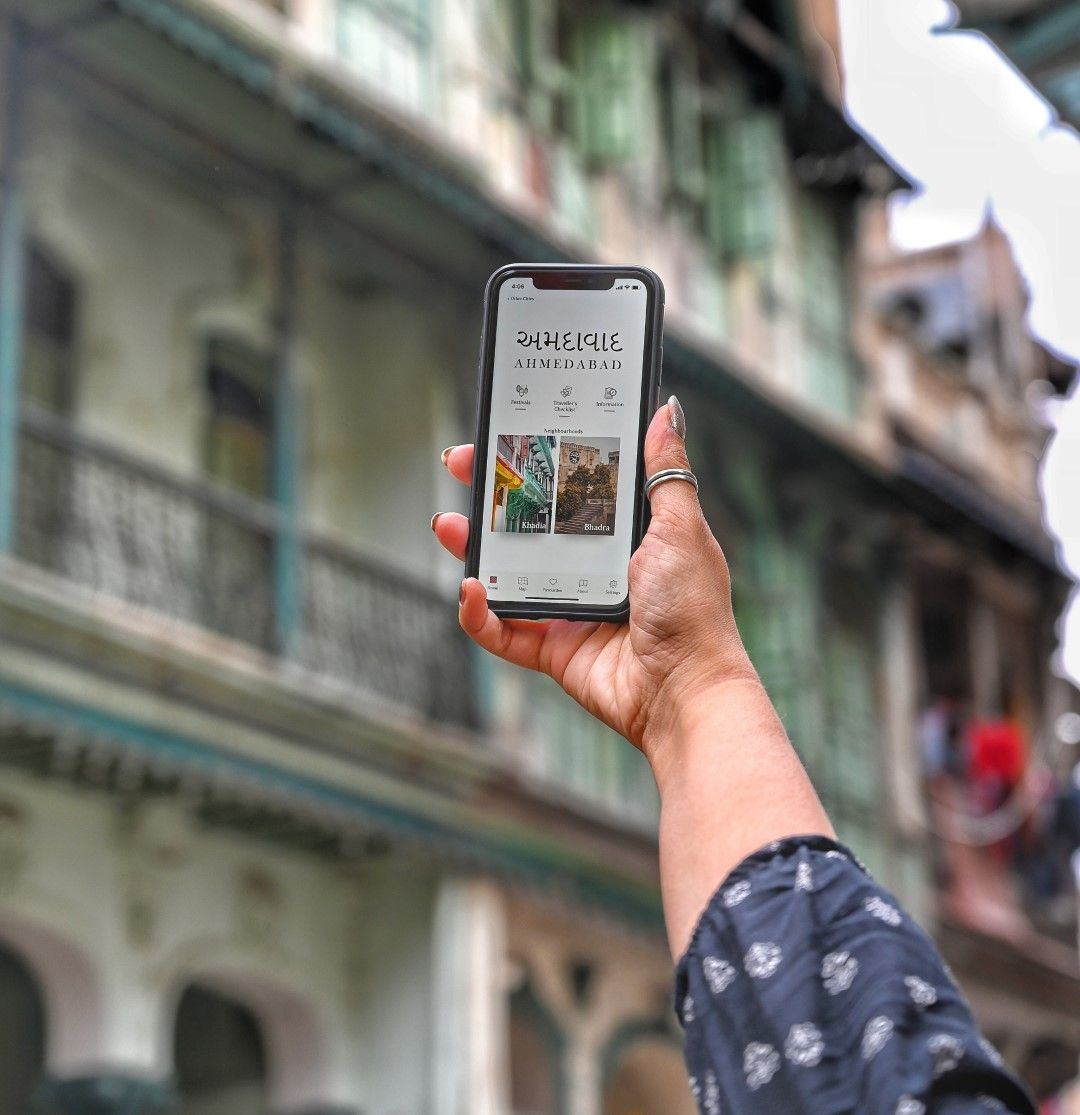
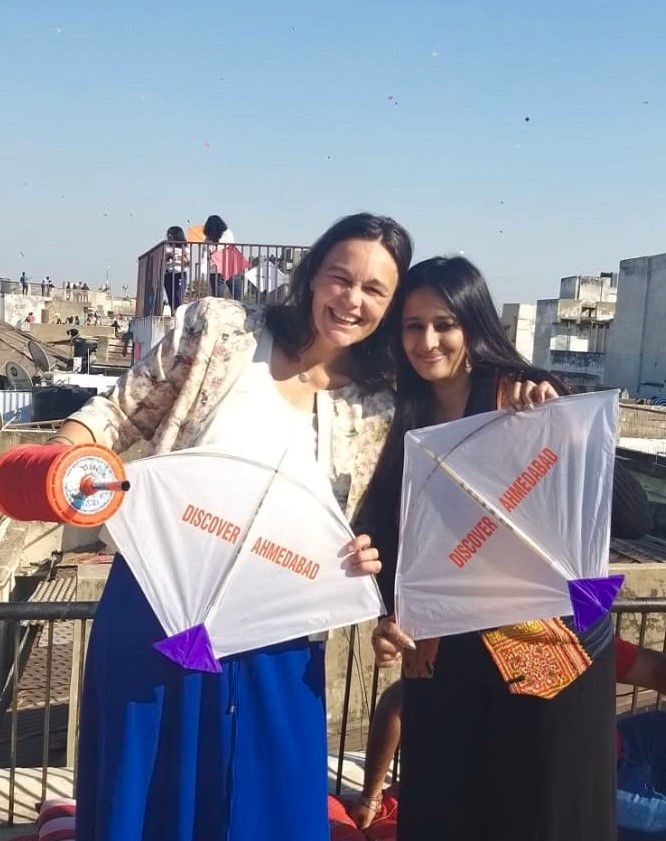

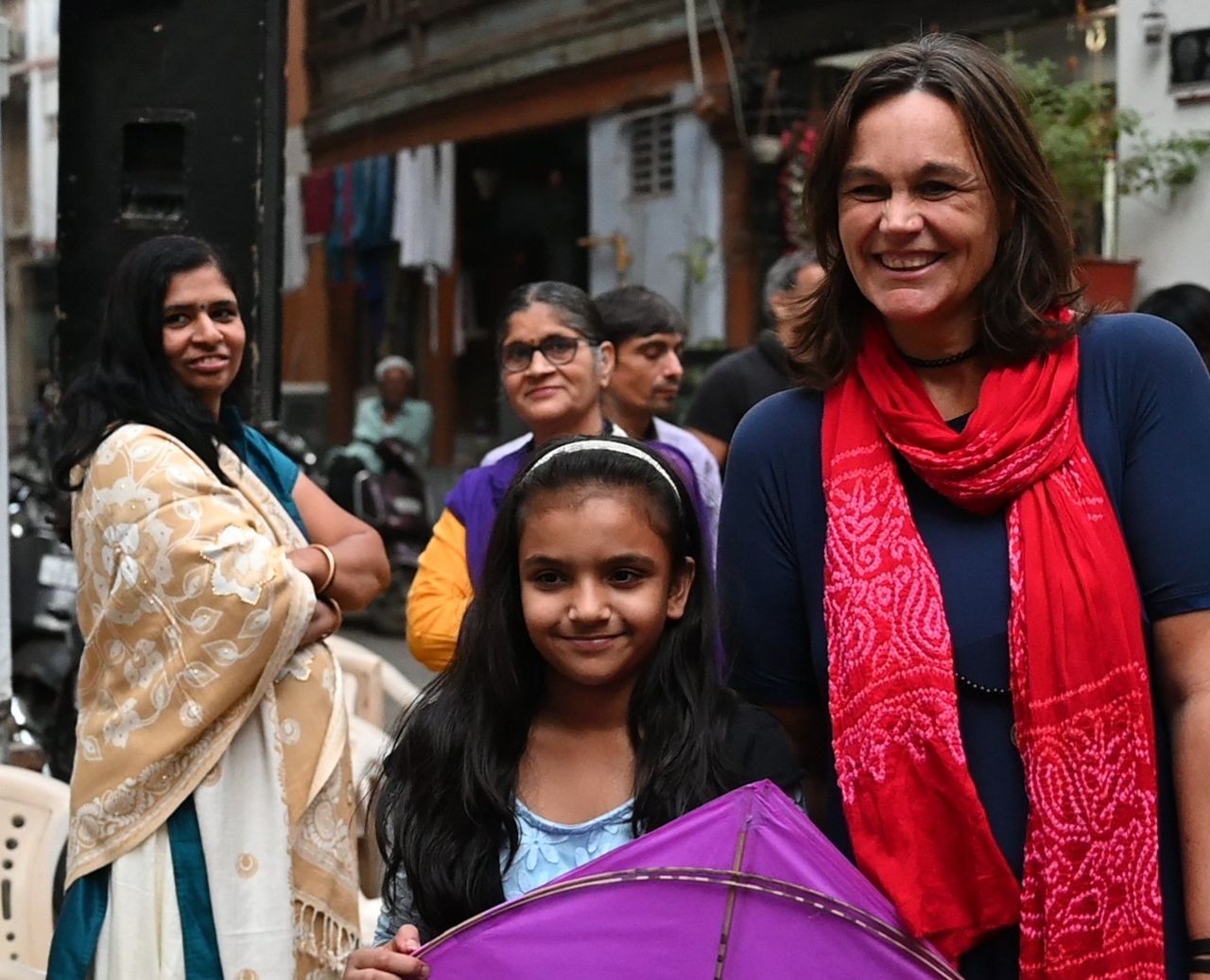

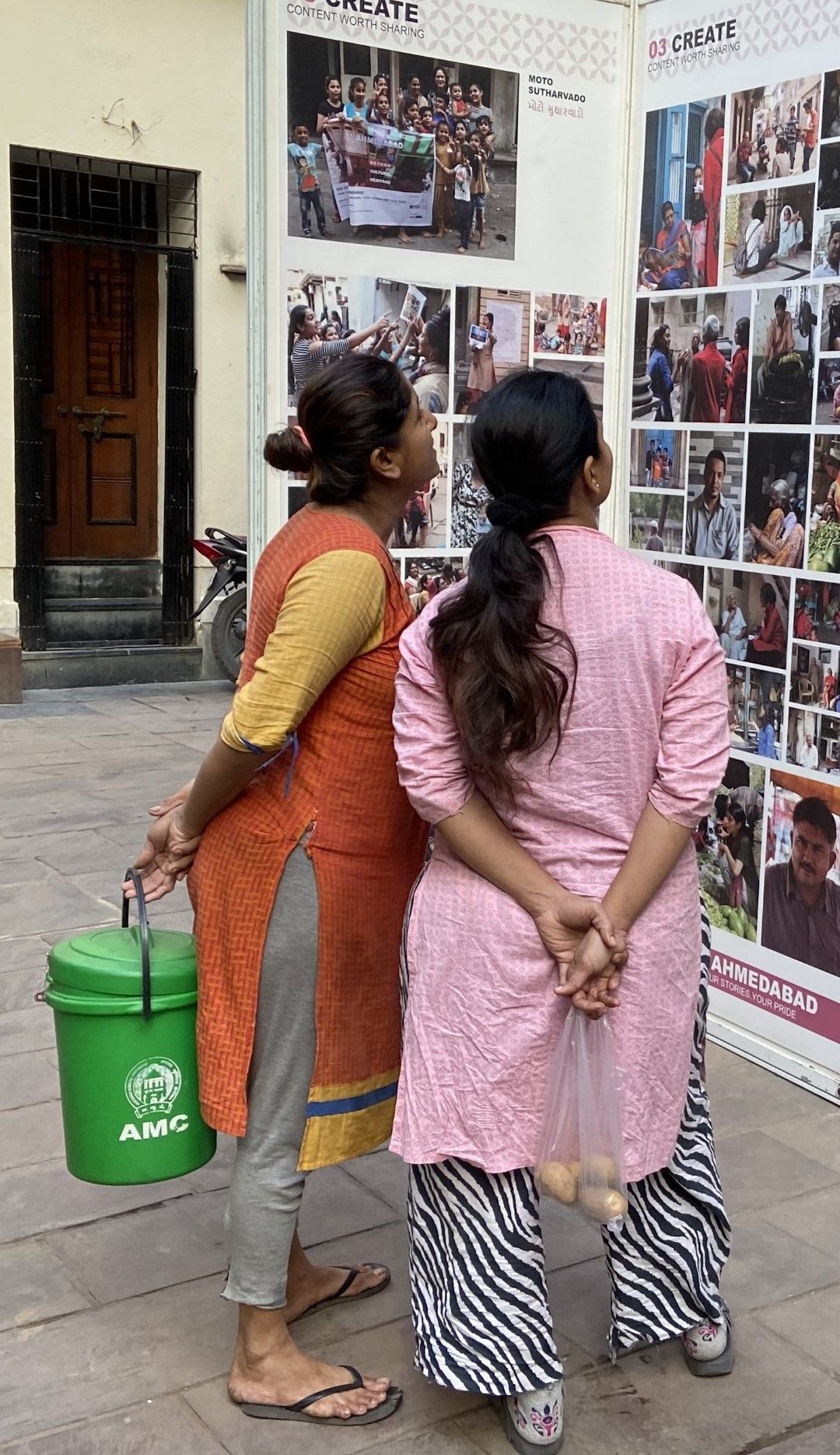
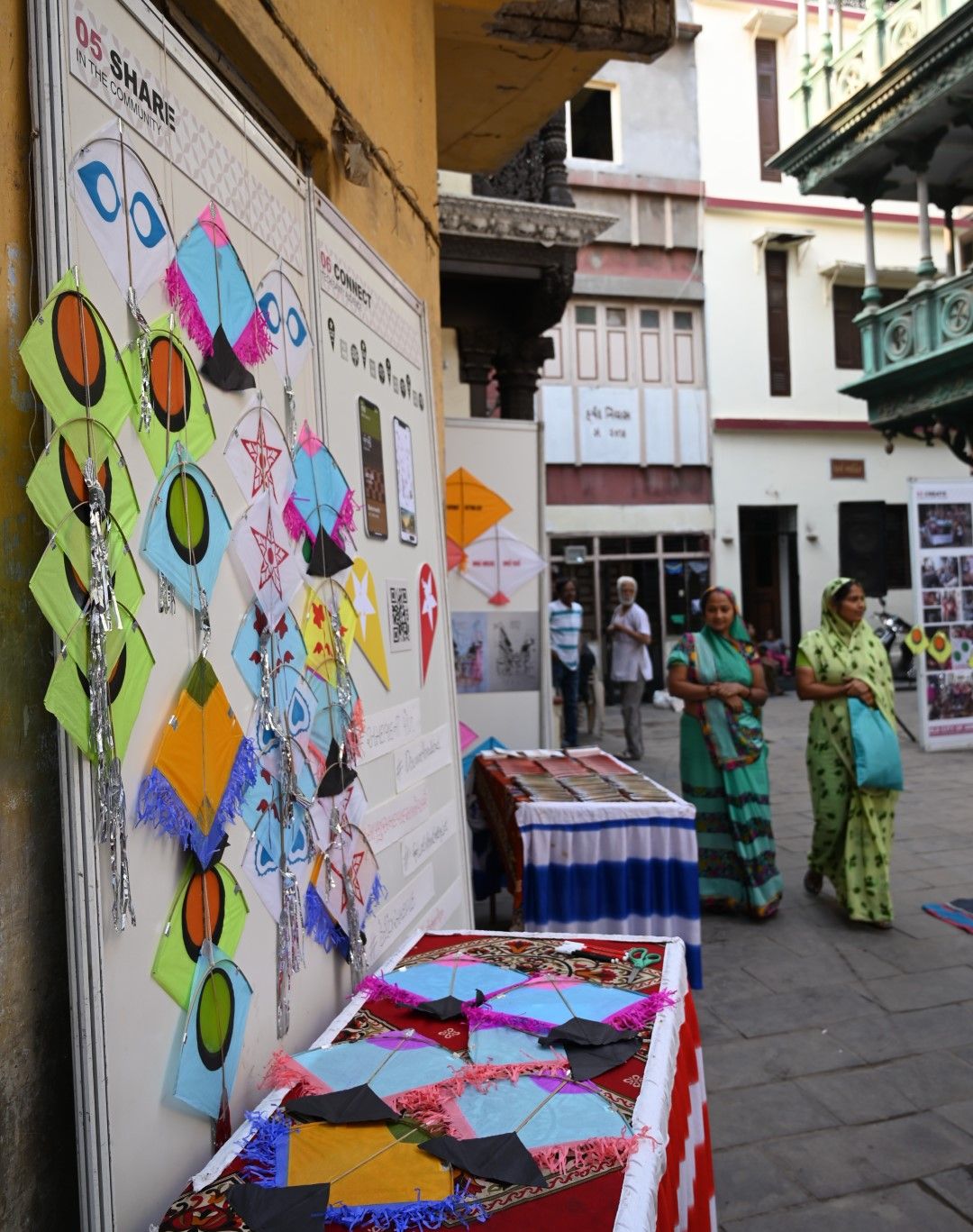
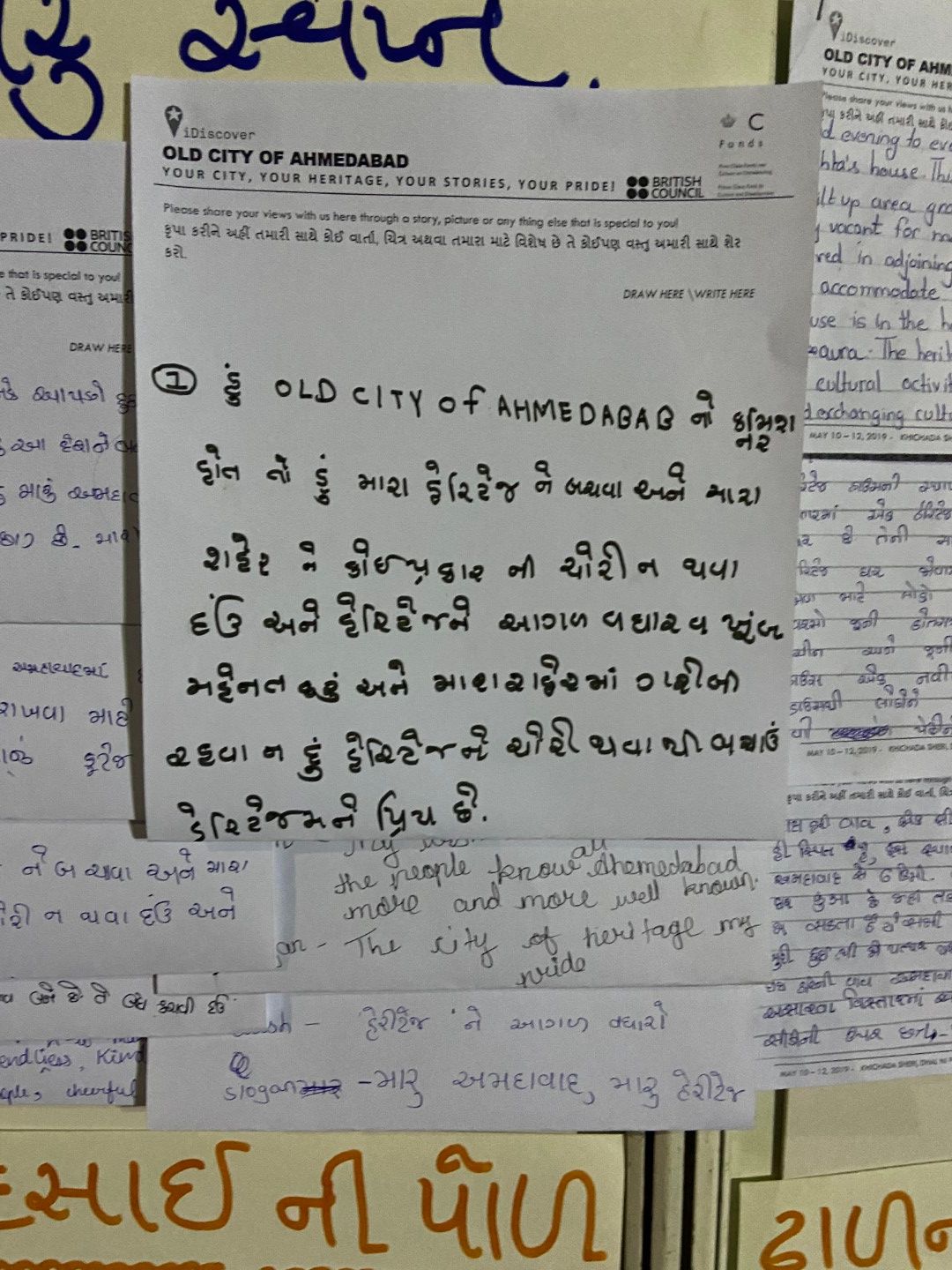
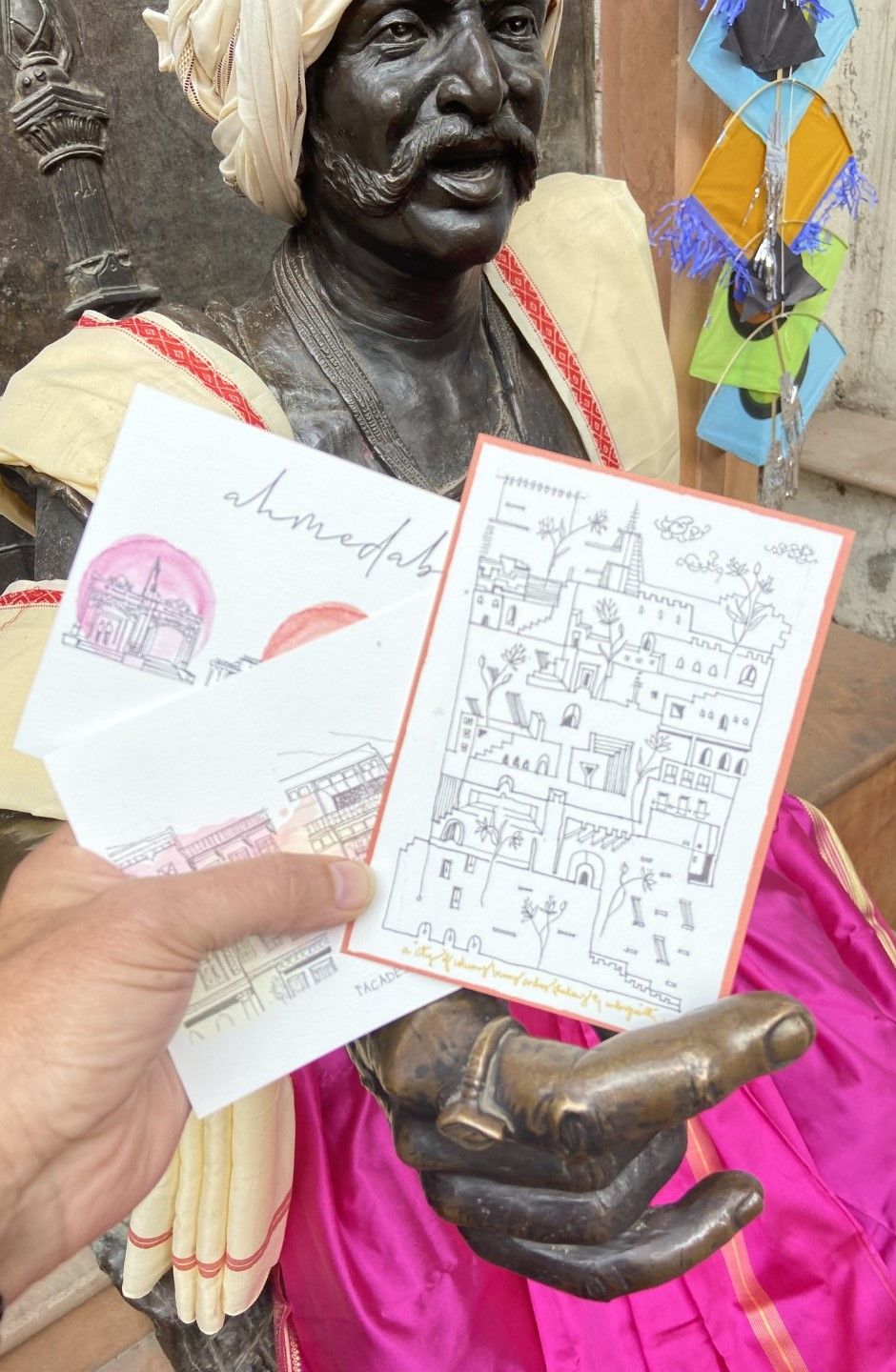
This makes that iDiscover Ahmedabad is more than just a walking trail. It provides visitors access to local voices and allows them to give direction to how their city will be experienced by visitors and developed by policymakers.
Looking back on the project what are the takeaways? Sameeha shares that the team was particularly happy to have brought together the old and the young and that the discussion was more diverse and deep than they had hoped for: "In India, it is highly uncommon to have civil society, academics, investors and policy people in one place. That we managed to gather them in this informal setting was perhaps the project’s proudest achievement."
Sameeha is also proud to share that the project came first in a global competition for IT solutions for World Heritage Sites. The jury liked how the mapping technology and a digital platform offer an accessible, practical, and inexpensive IT solution for more inclusive management and branding of World Heritage cities: "The approach overcomes the disconnection that often occurs between residents and managers of World Heritage. The winning submission proposed a bottom-up, community-led process acknowledging the context’s diversity and finding common ground among different gender, economic, and religious groups."
People of the old city of Ahmedabad are the most integral and essential part of the culture and heritage of our Ahmedabad. People, their stories and their unity is the most important and significant aspect of our heritage.
The value added of the iDiscover process is a no-brainer for the passionate urban planner: "This is exactly the type of project that is needed in a city like this. We need more interaction that is aimed at igniting locals’ love and respect for their heritage, and rich culture and tools to pass on the rich treasure to the next generations. The use of technology and creativity lowers the threshold and makes it exciting for residents to take part." Sameeha and the iDiscover team hope to take the concept to other heritage cities in India, like Mumbai, Old Goa, Calcutta, Jaipur, Chandigarh and Delhi and integrate this step in the heritage planning process as a participatory tool for empowerment and interpretation of urban heritage sites.
Finally, we asked Sameeha to share some do's and dont's of the process:
Do’s
- Involve as many people as possible without any bias. More people, especially women and children does provide a unique perspective for the outcome to take a process of looking at heritage in the city
- Try to conduct dialogues in the local language and use the most accessible locations to conduct any community gatherings, meetings or interviews. This eases the process and makes people comfortable.
- Involving local talent from the community also is an added bonus. It may require capacity building and sometimes handholding, however, it’s a great way to support the local economy and empowers youth.
Dont's
- Avoid any religious and cast-related comments during any discussions. Inclusivity is the key to such a project.
- Avoid any political discussions and also stay away from stating your belief, especially in sensitive areas.
Watch the project video for a look behind the scenes.
Explore Ahmedabad like a local
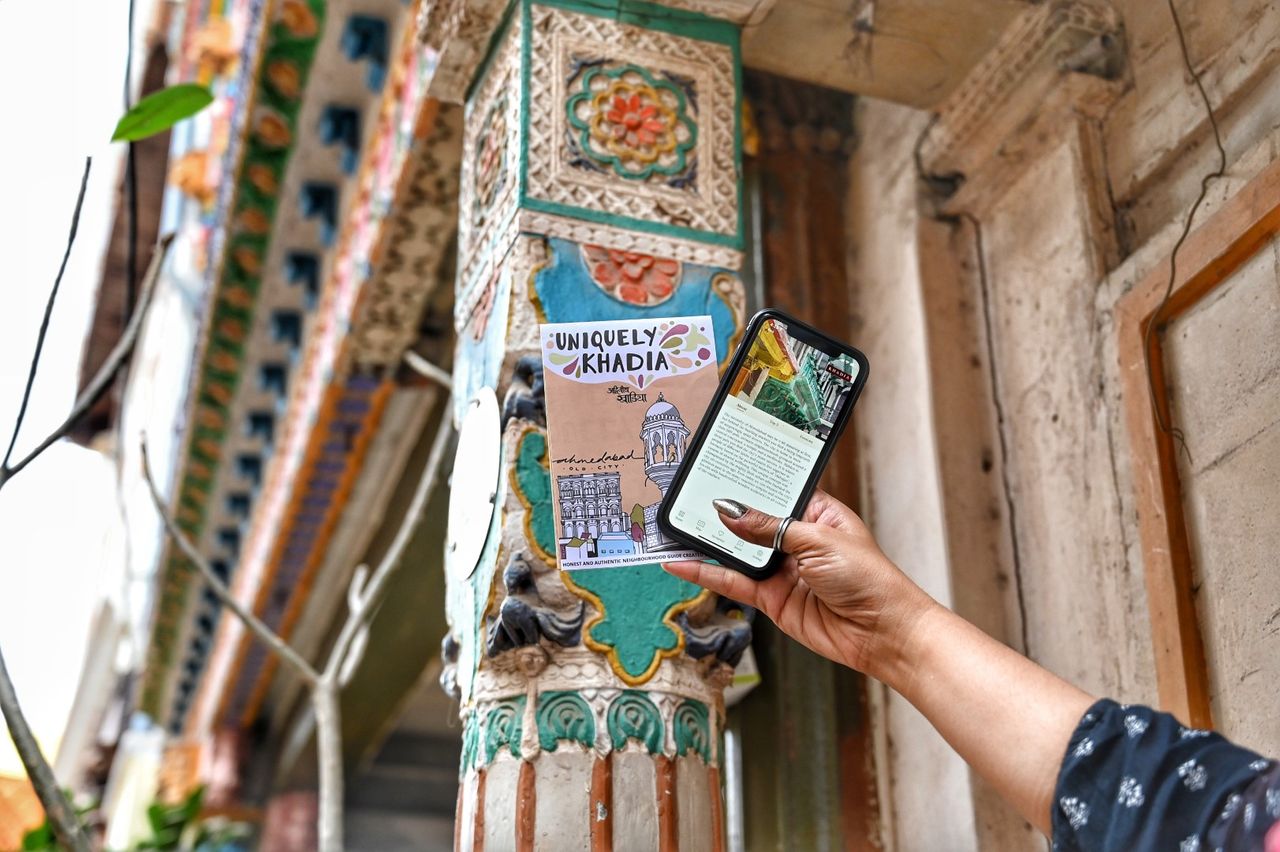
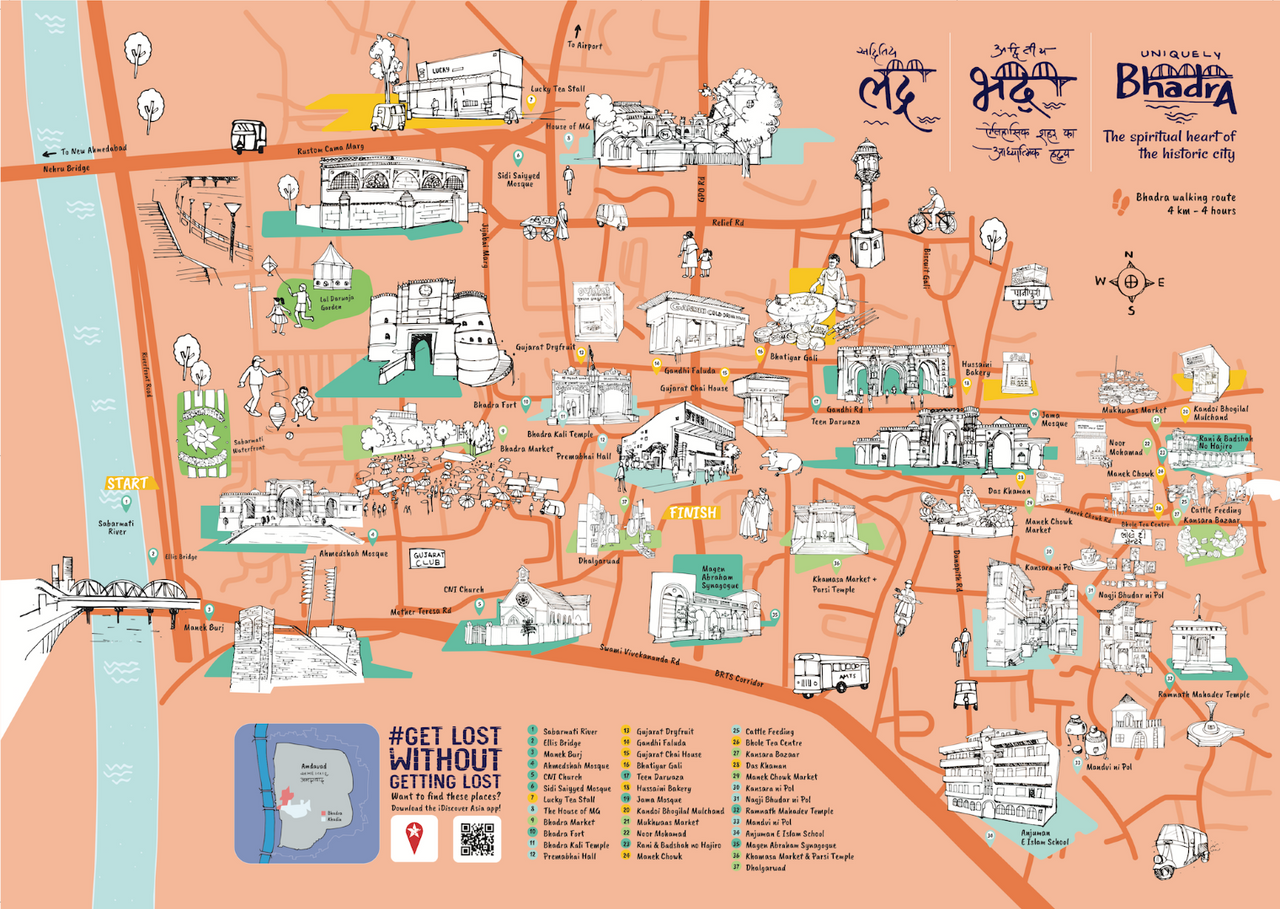
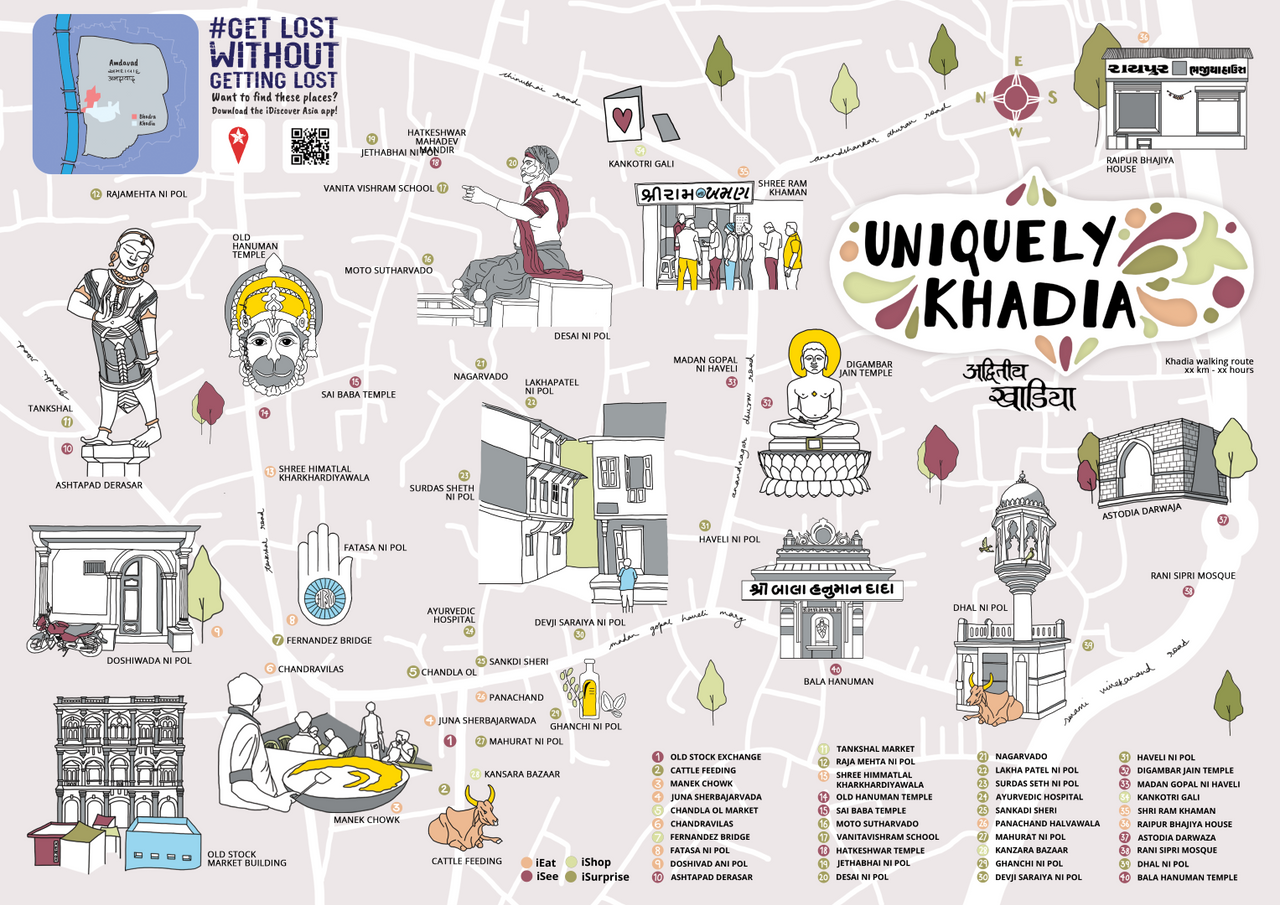
Created by locals and designed by locals, iDiscover is your ultimate guide to exploring the hidden gems in Ahmedabad old city through the lens of local residents. Two walking itineraries handcrafted by the women and children of inner-city neighbourhoods: Desai ni Pol and Dhal ni Pol, are accessible as a self-guided digital walk or as a printed map. The mapping process was facilitated by the passionate folks of ICID with the blessing of the Ahmedabad World Heritage City Trust (AWHCT), the Center for Heritage Management, Ahmedabad University and the help of the following amazing individuals:
Illustrators: Maitri @maitri_dalicha Bhadresh @greyphyte and Mainak @MainakDas.
Writers: Naharika @rikaverse Tanya @tanya.chandel.
Photographer: @parthshuklaofficial.
Media: Creative Yatra @CreativeYatra.
Community connectors: Dr Bhatt @HemantBhatt and Mr Patel @RajivPatel.
